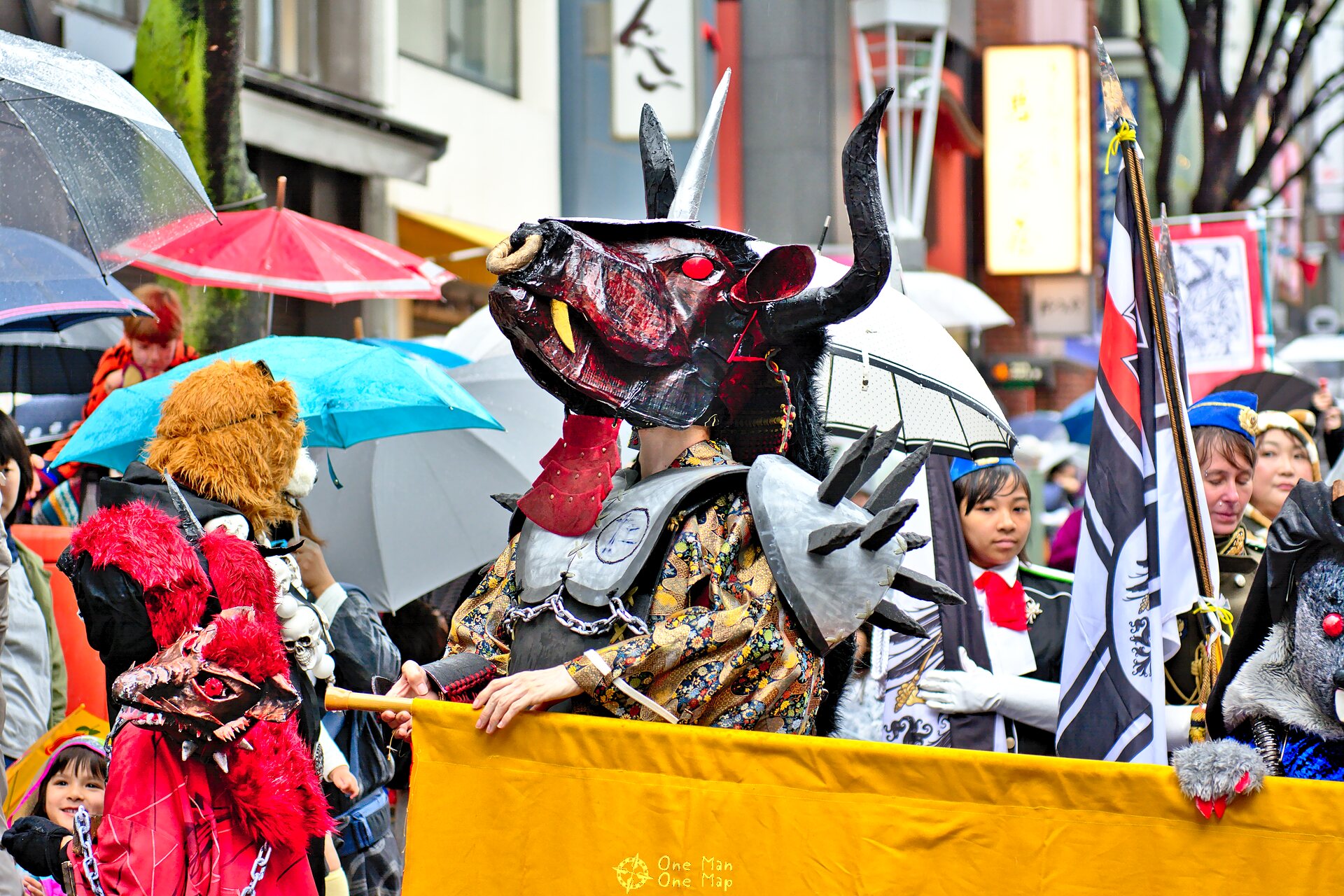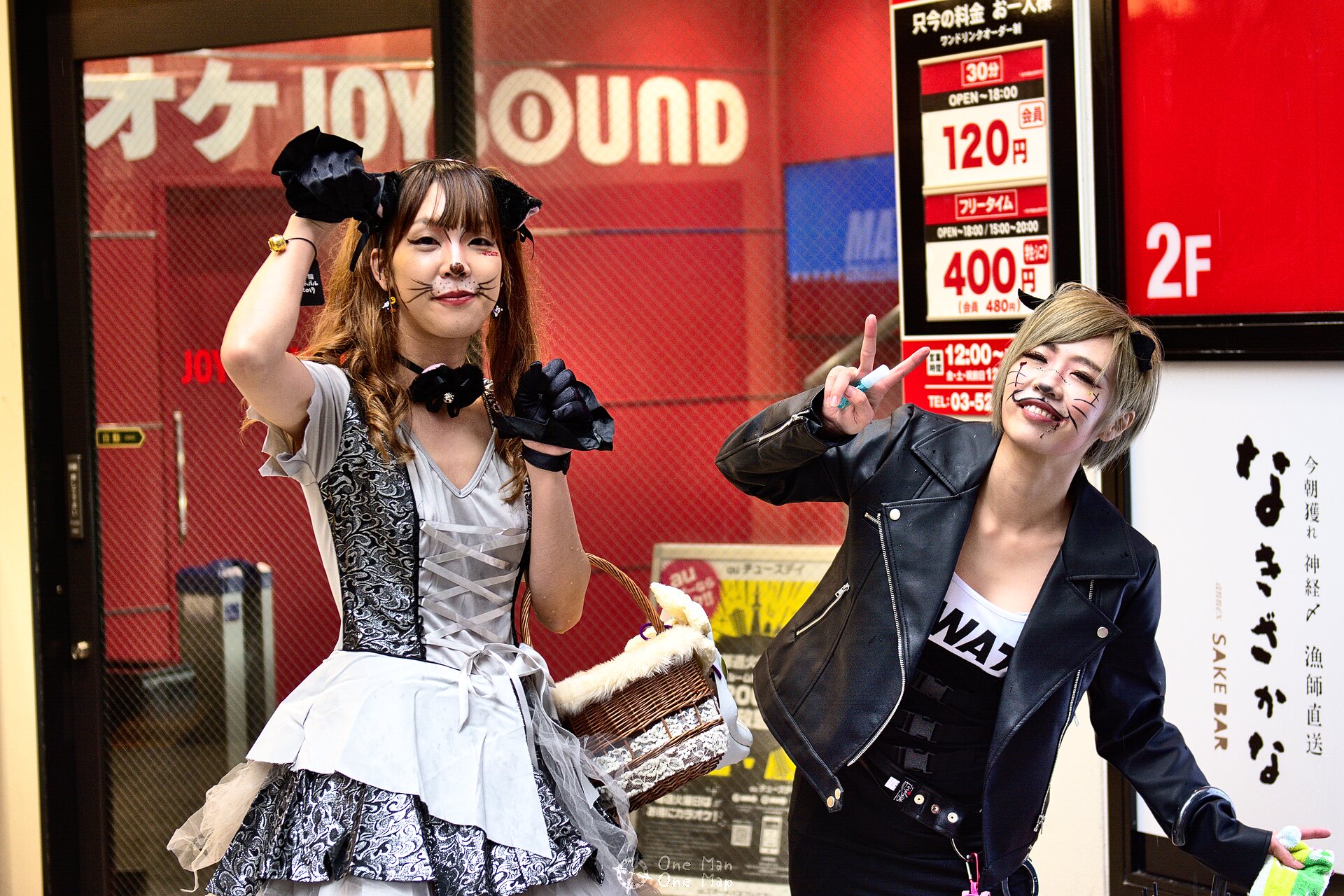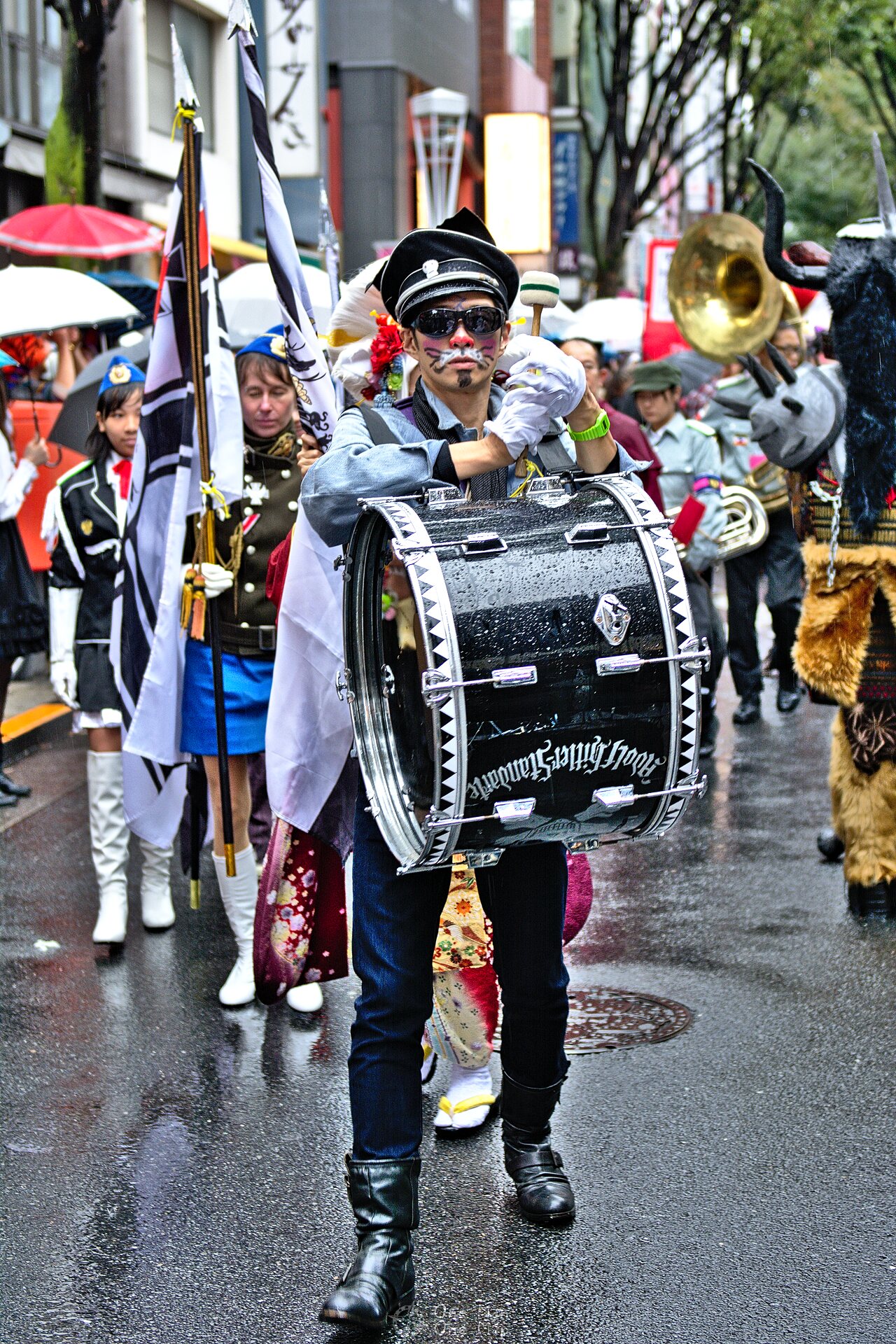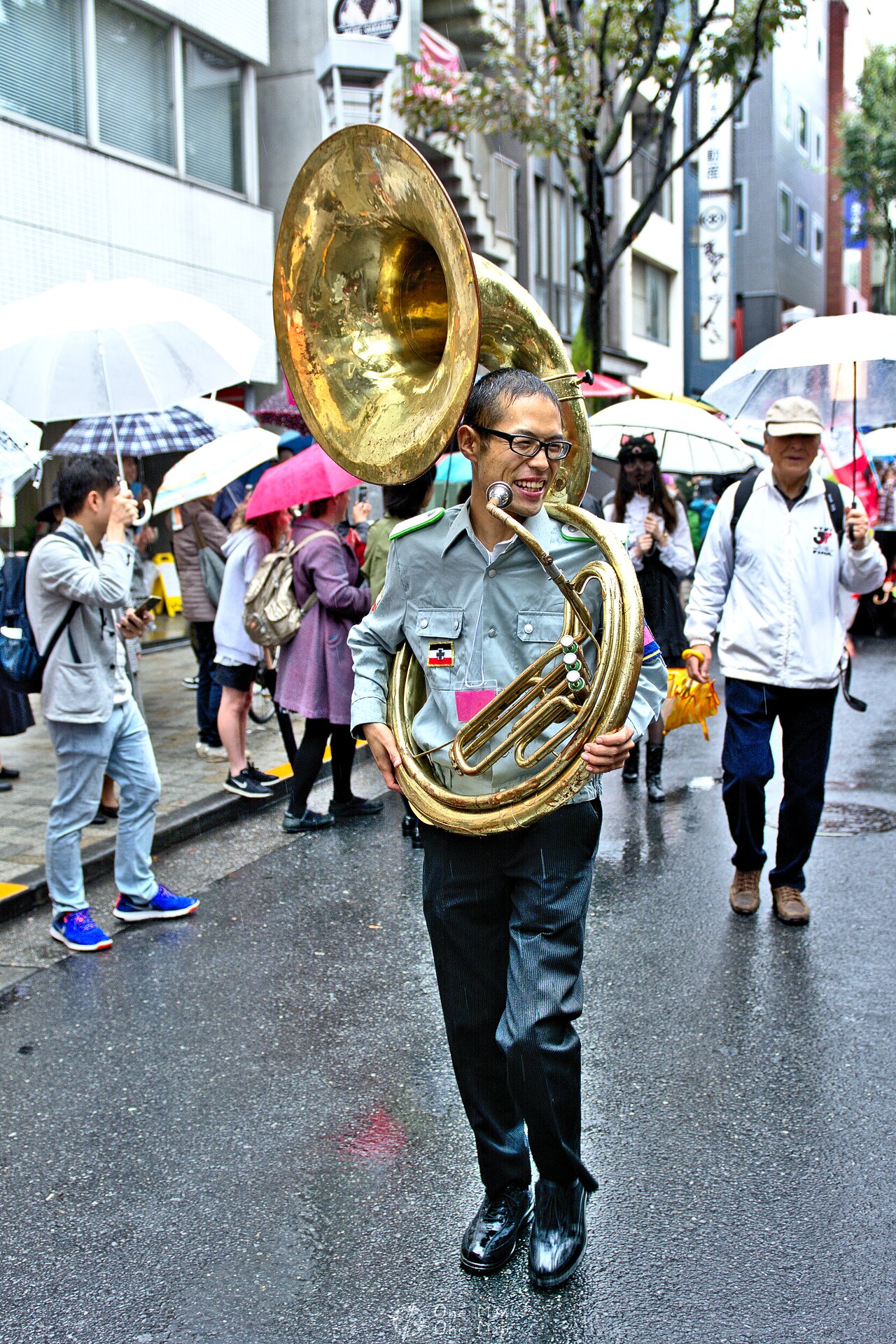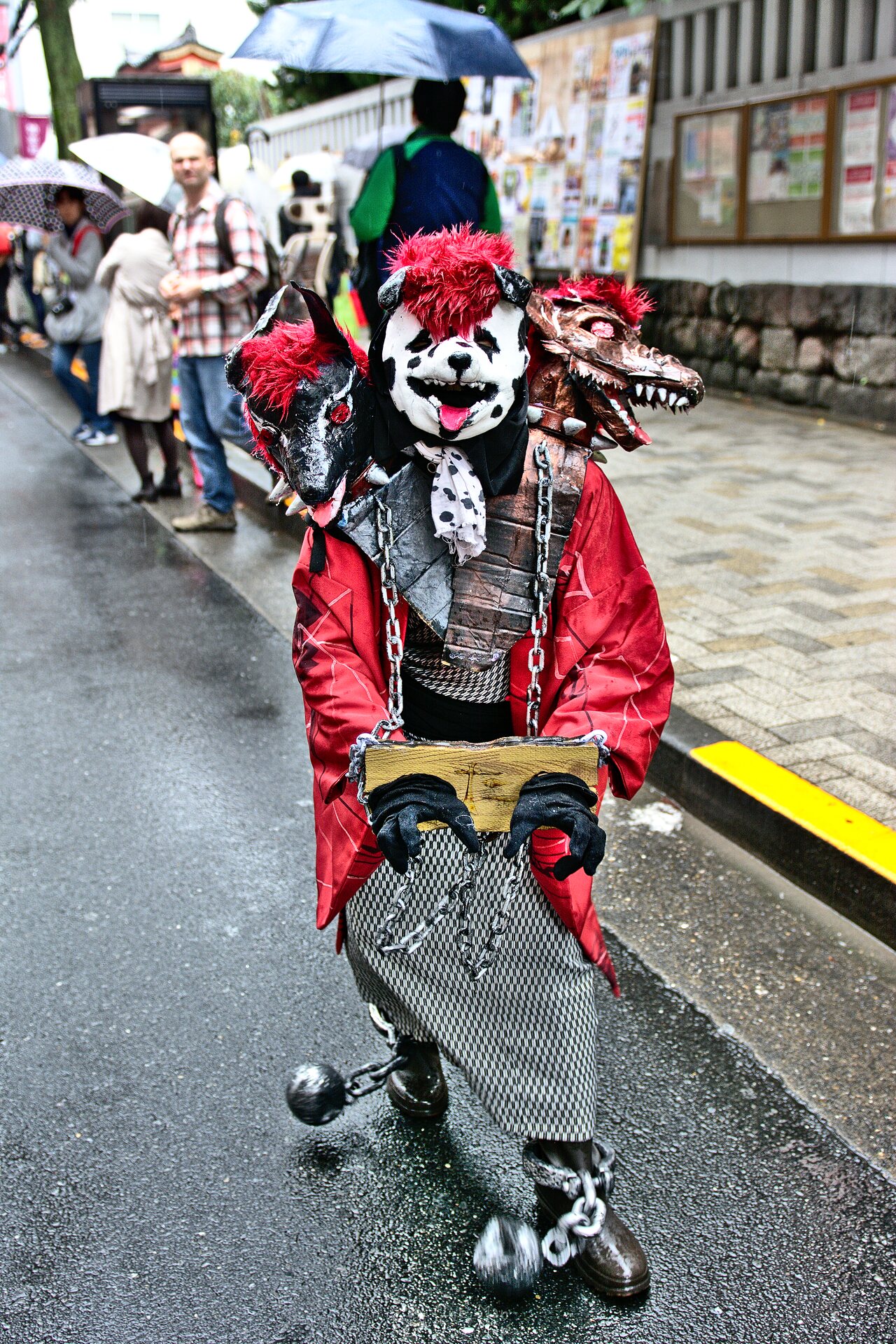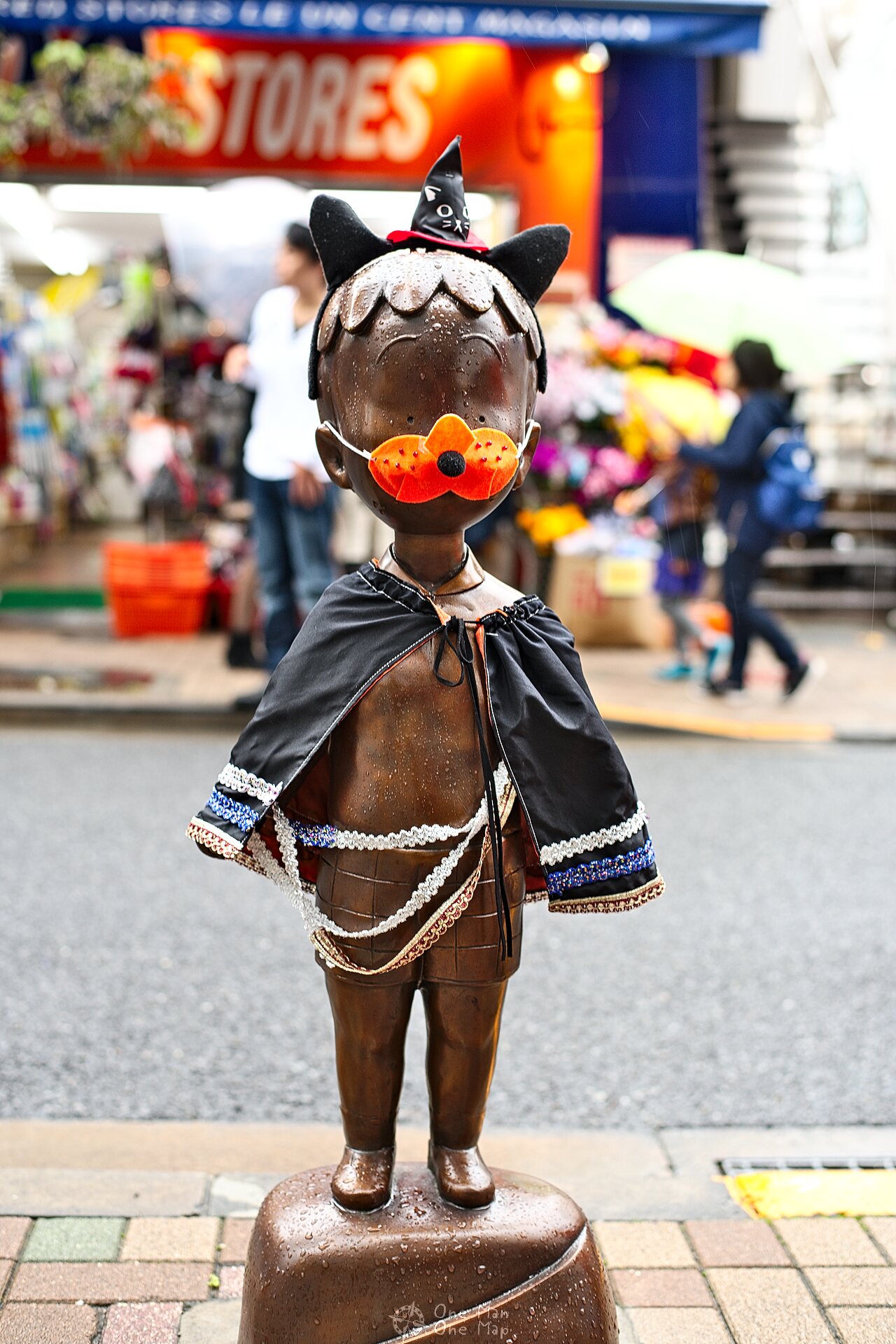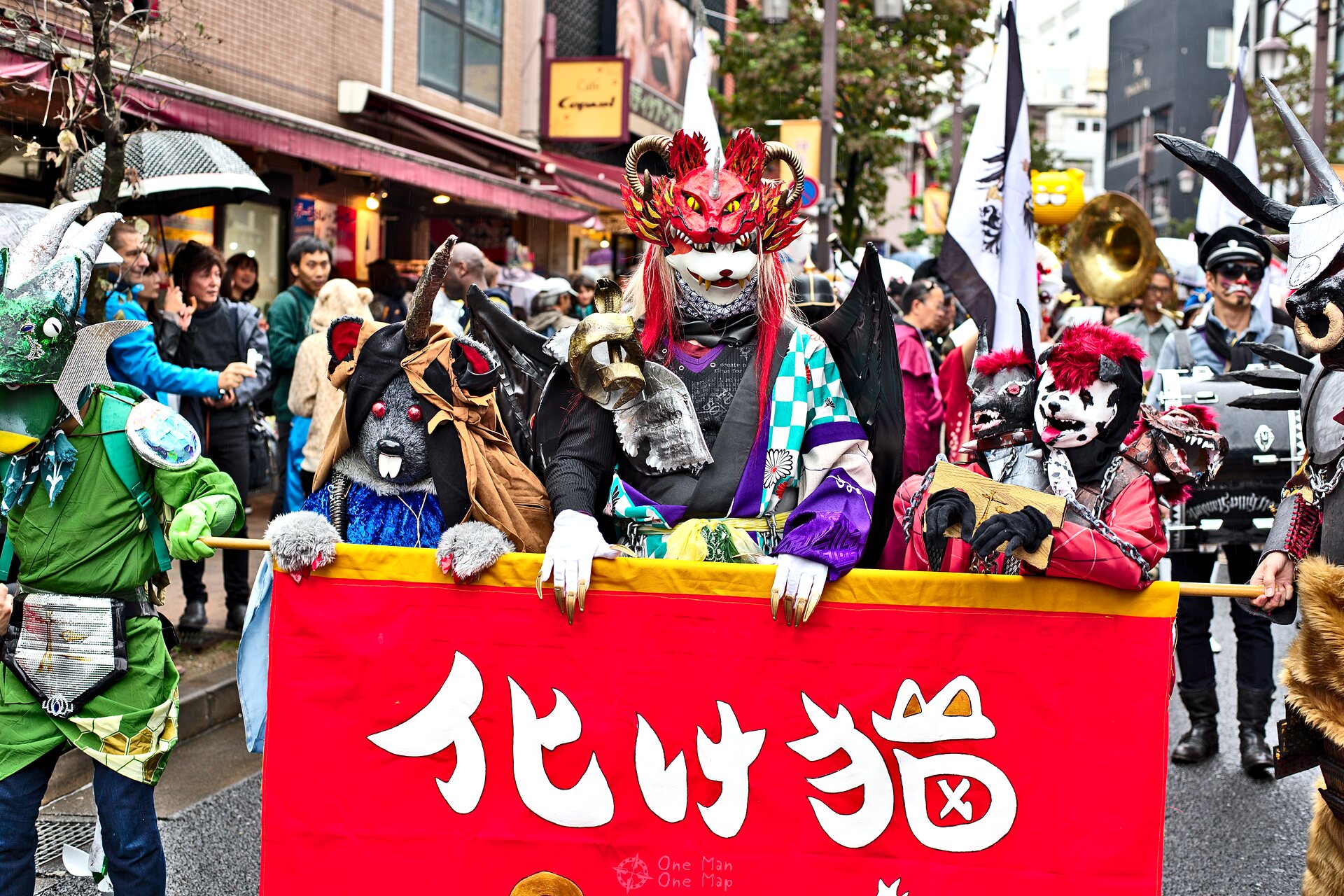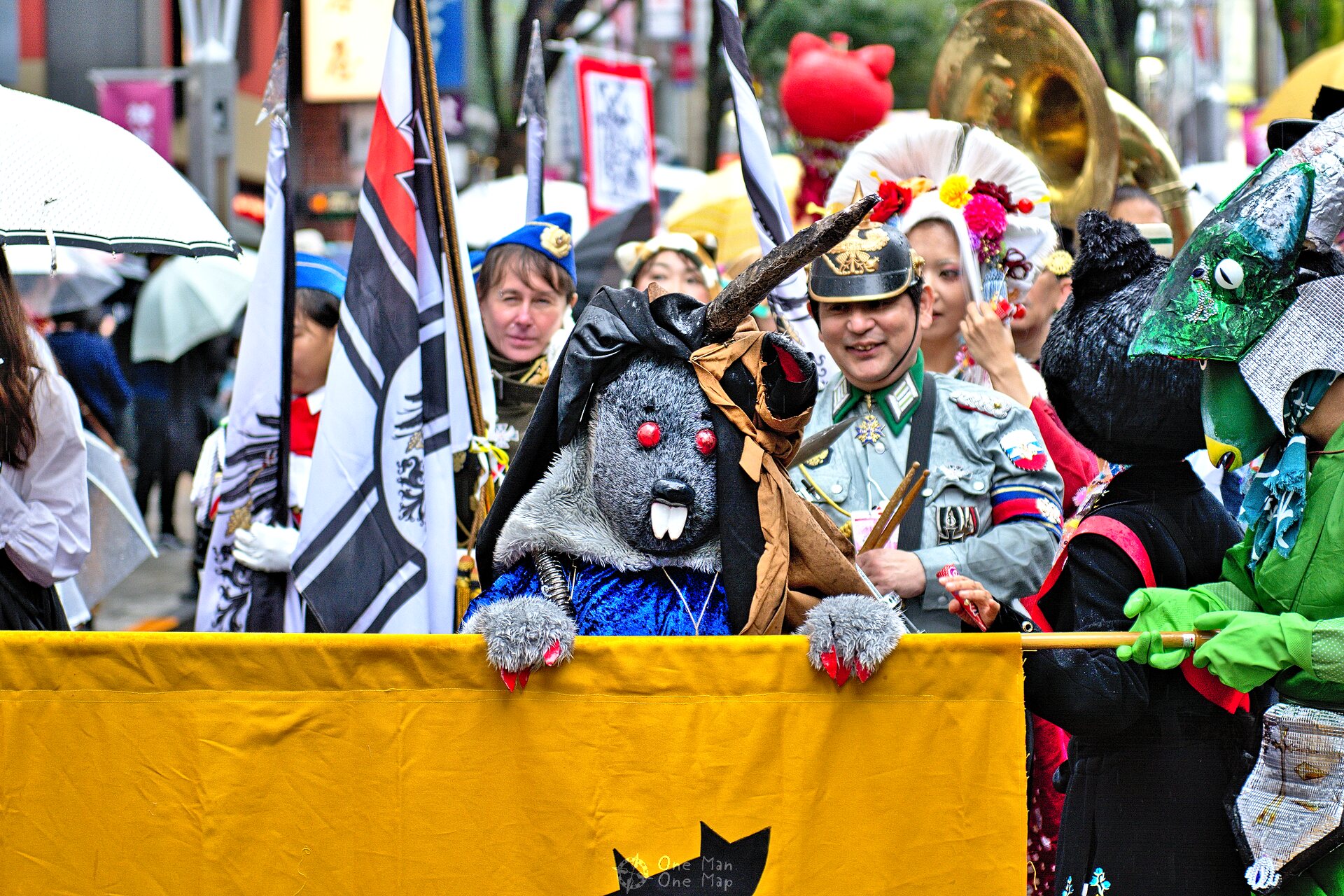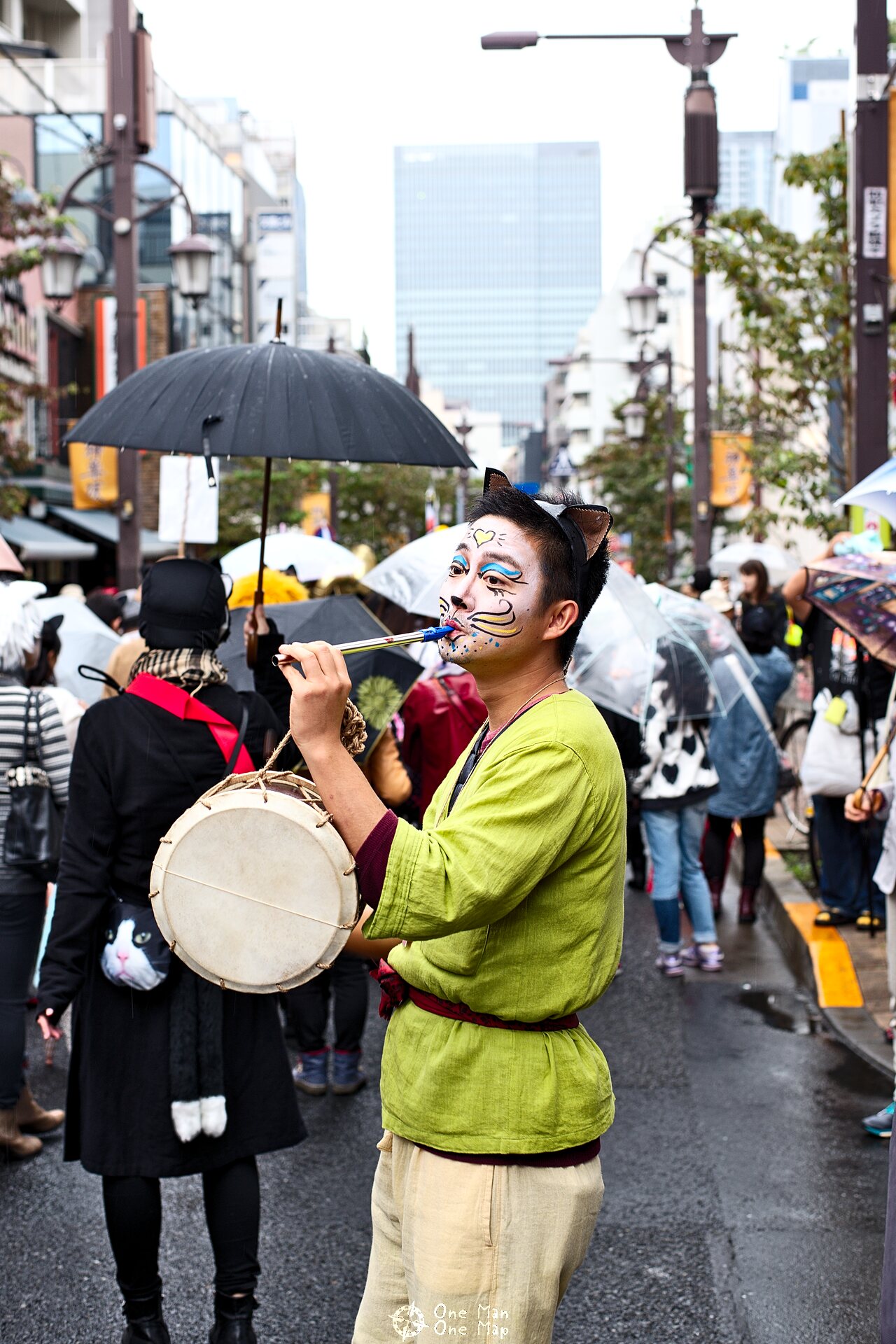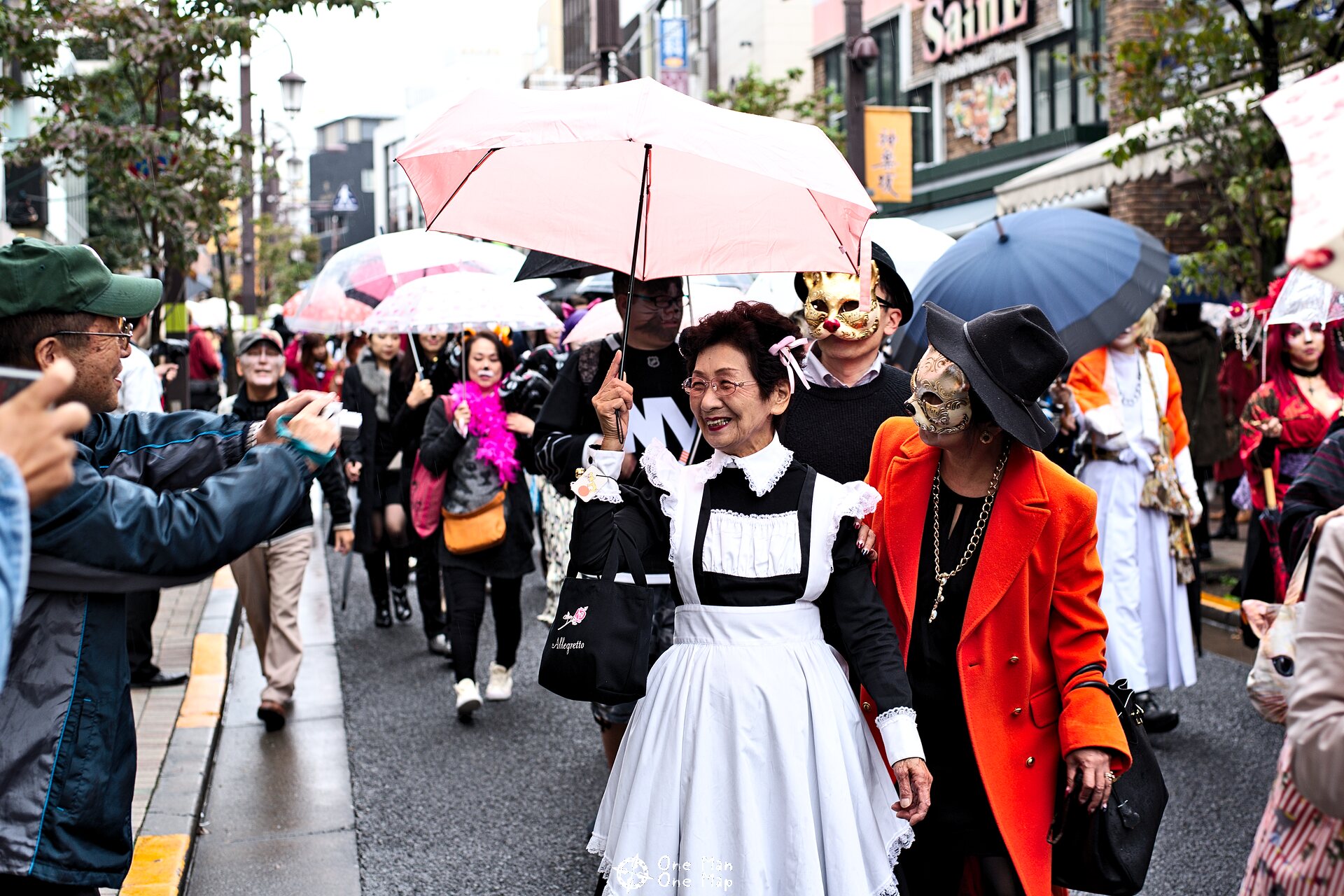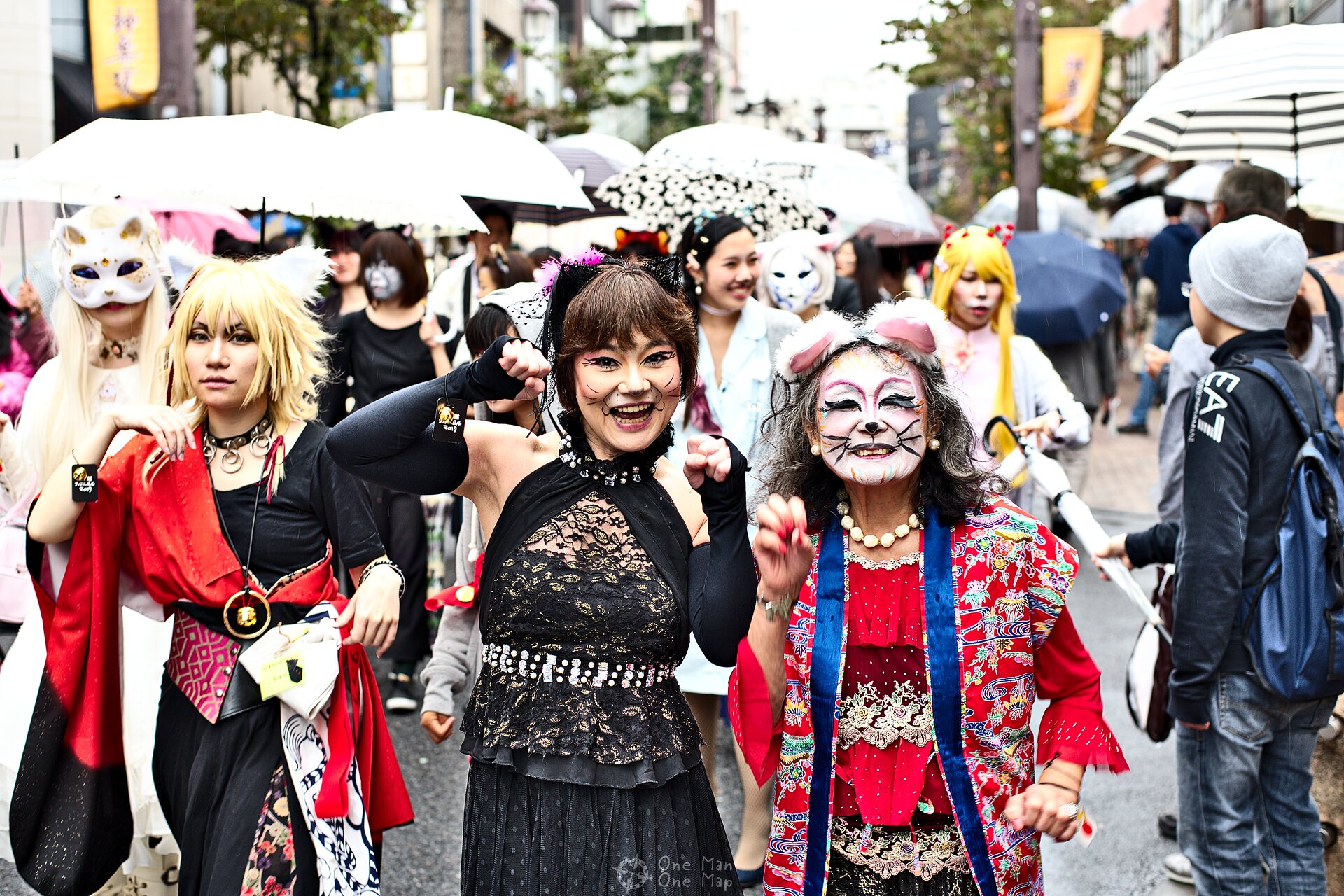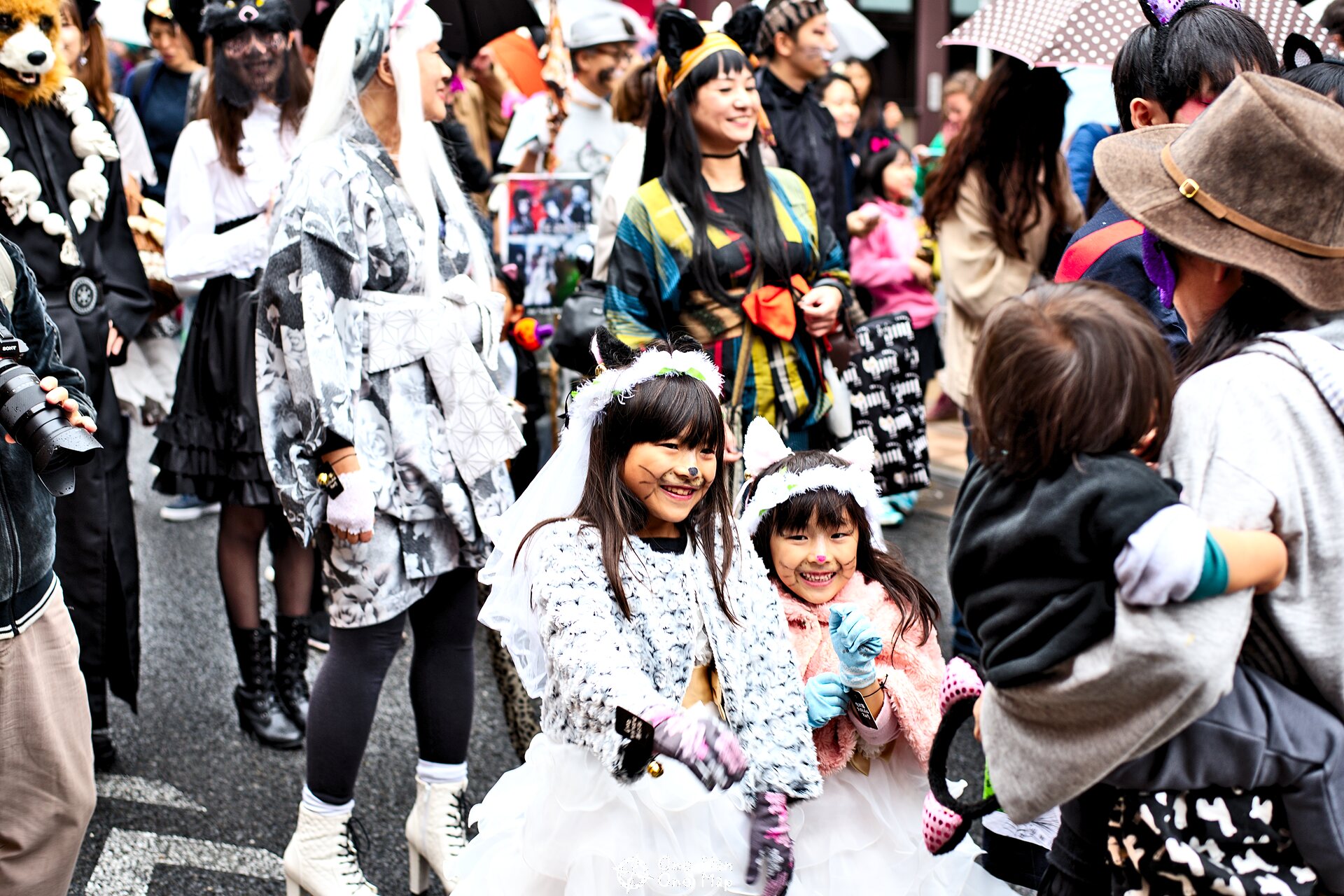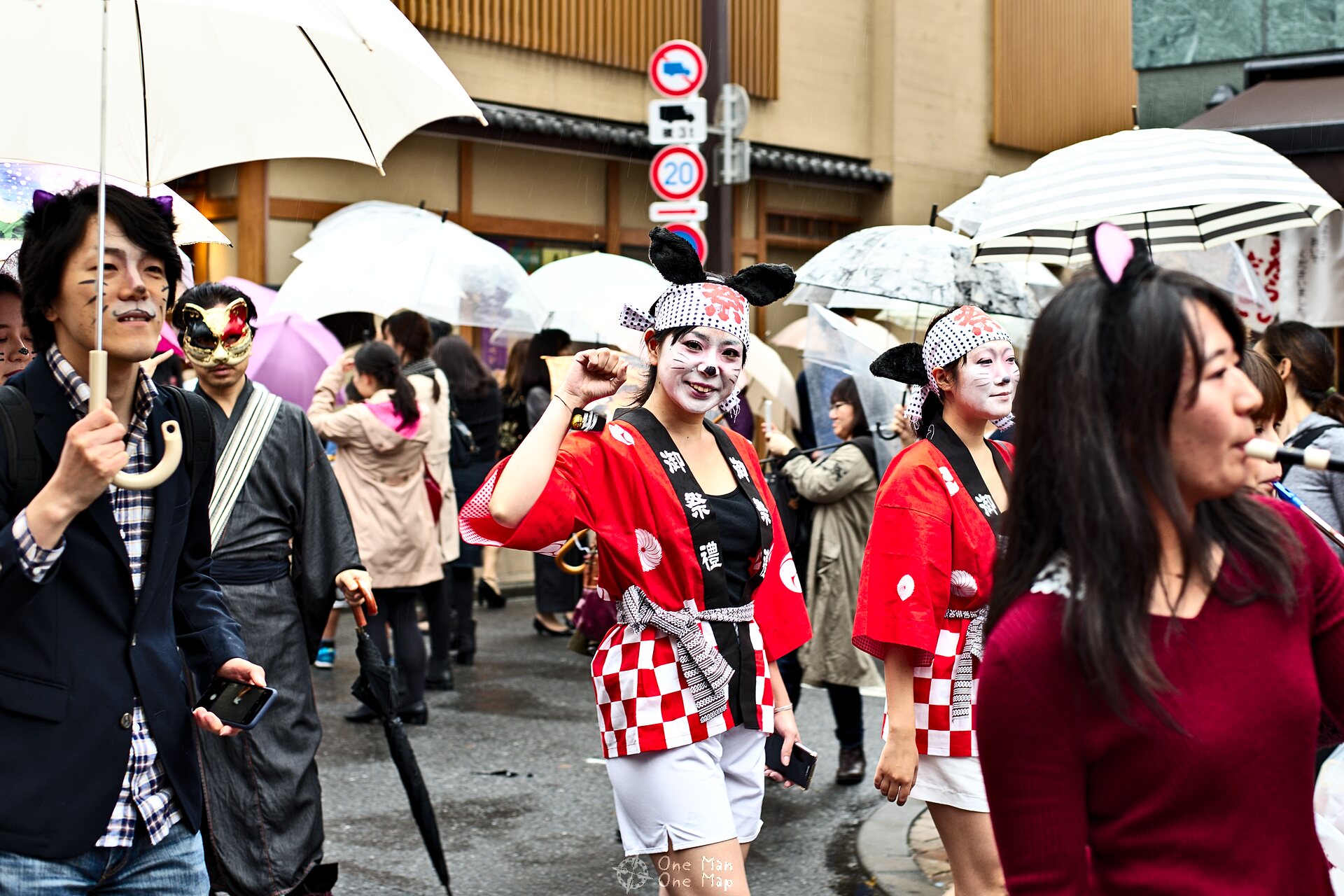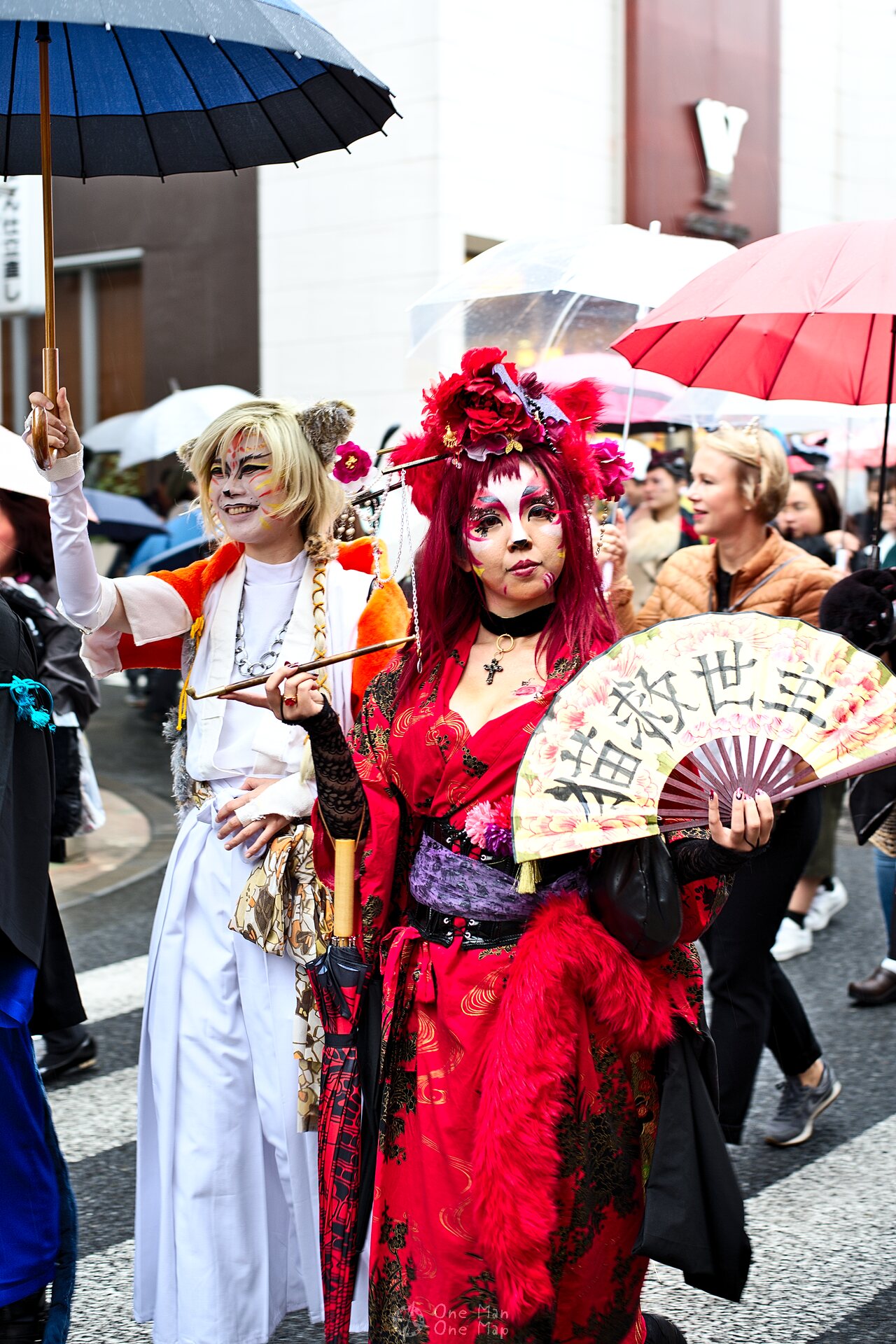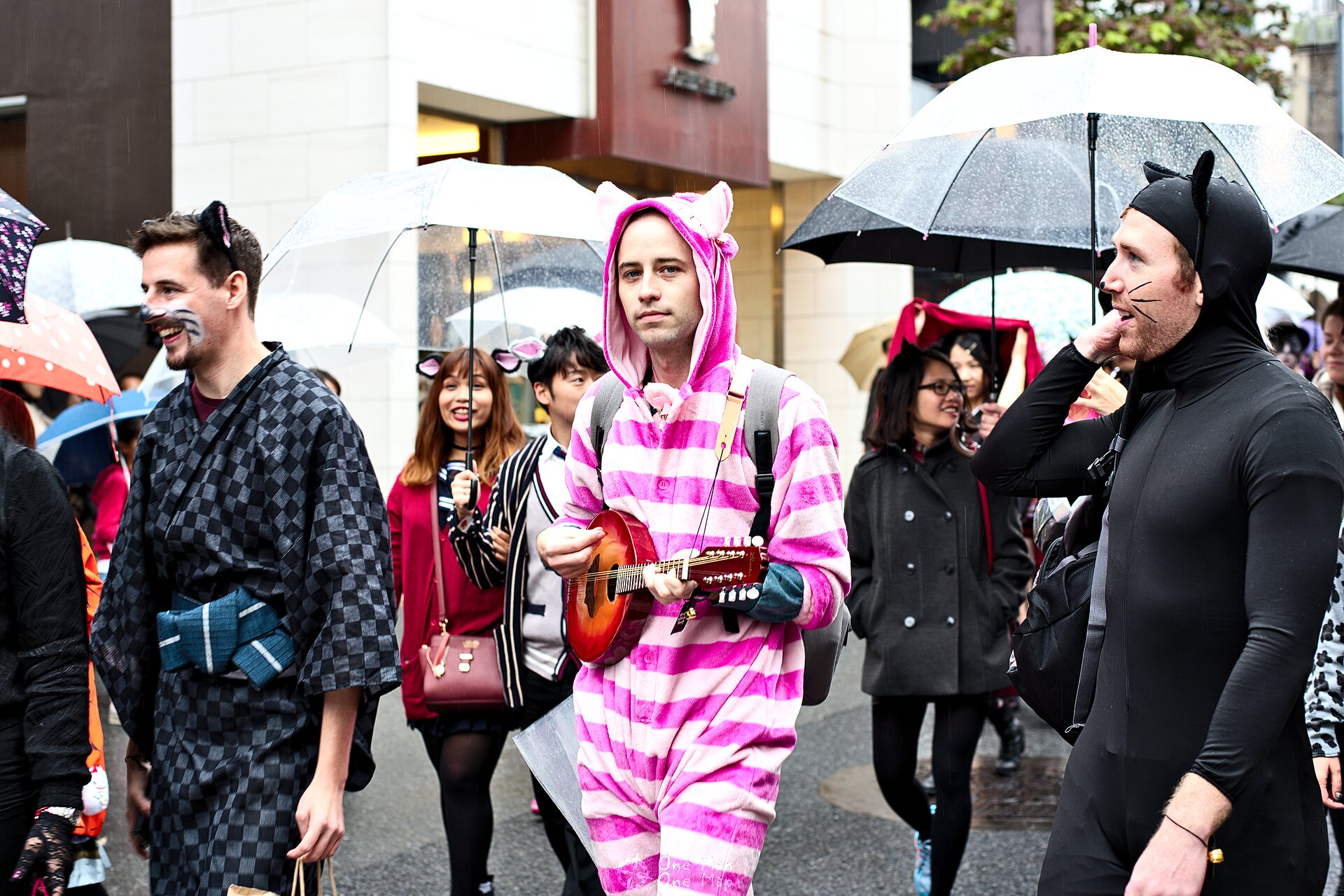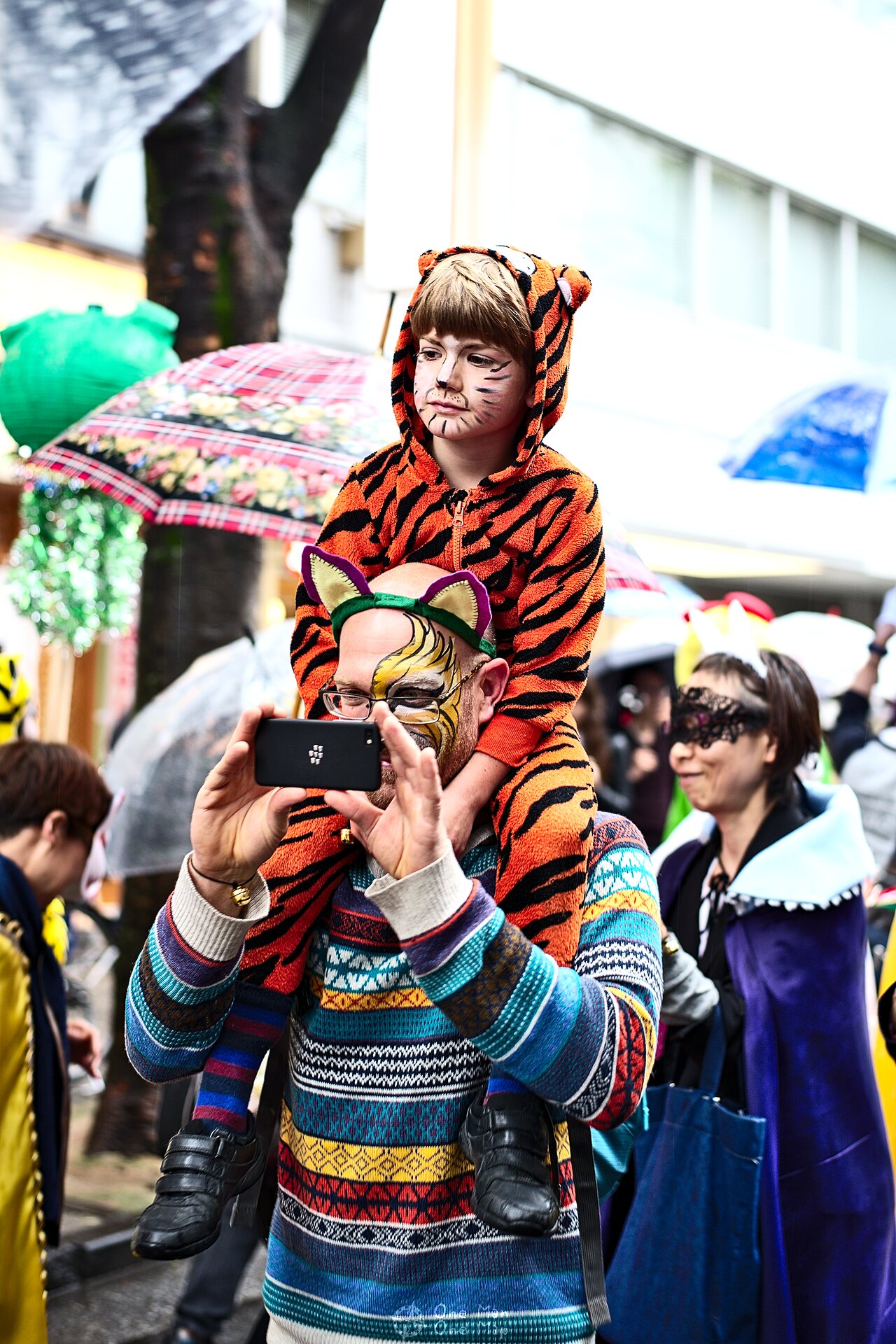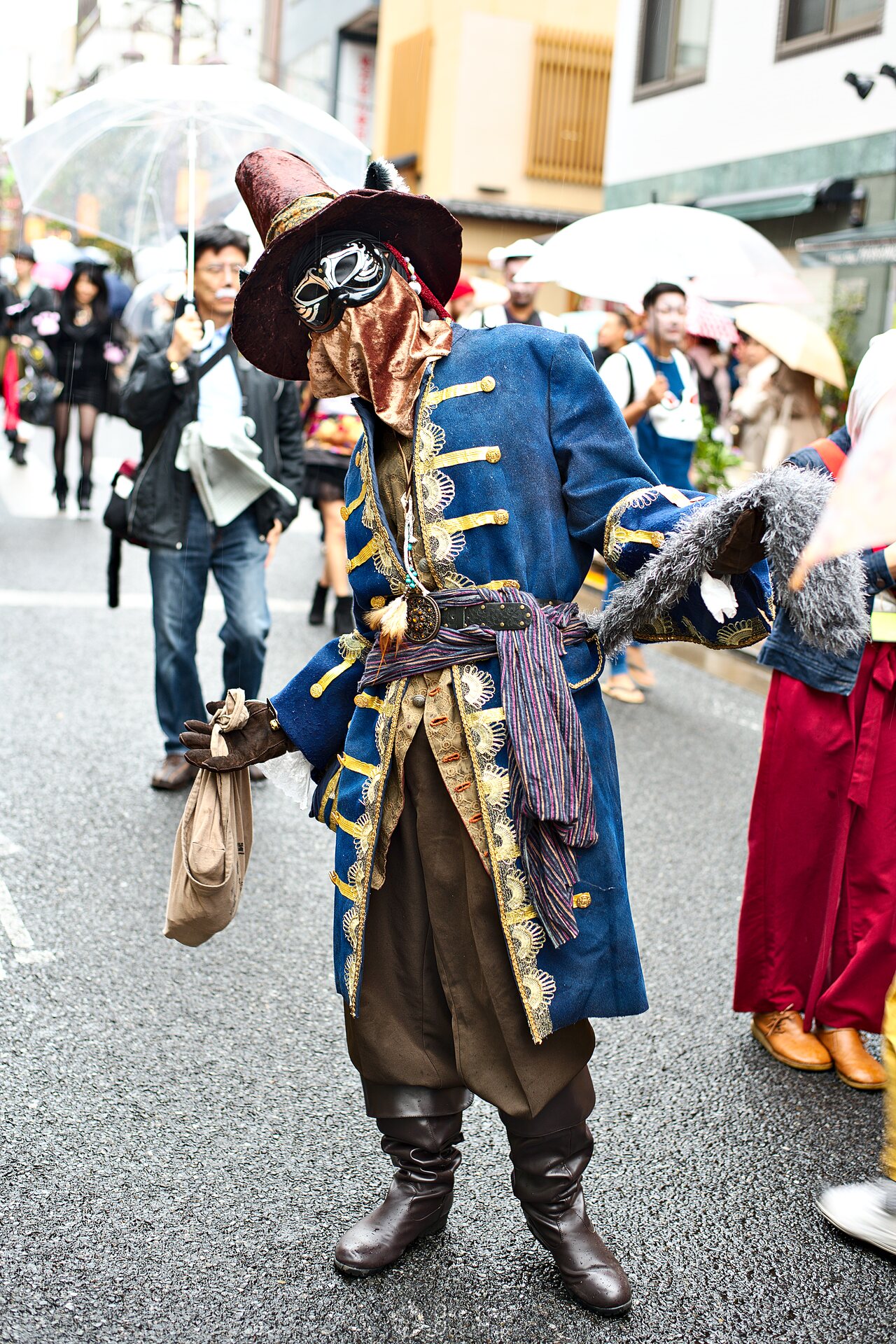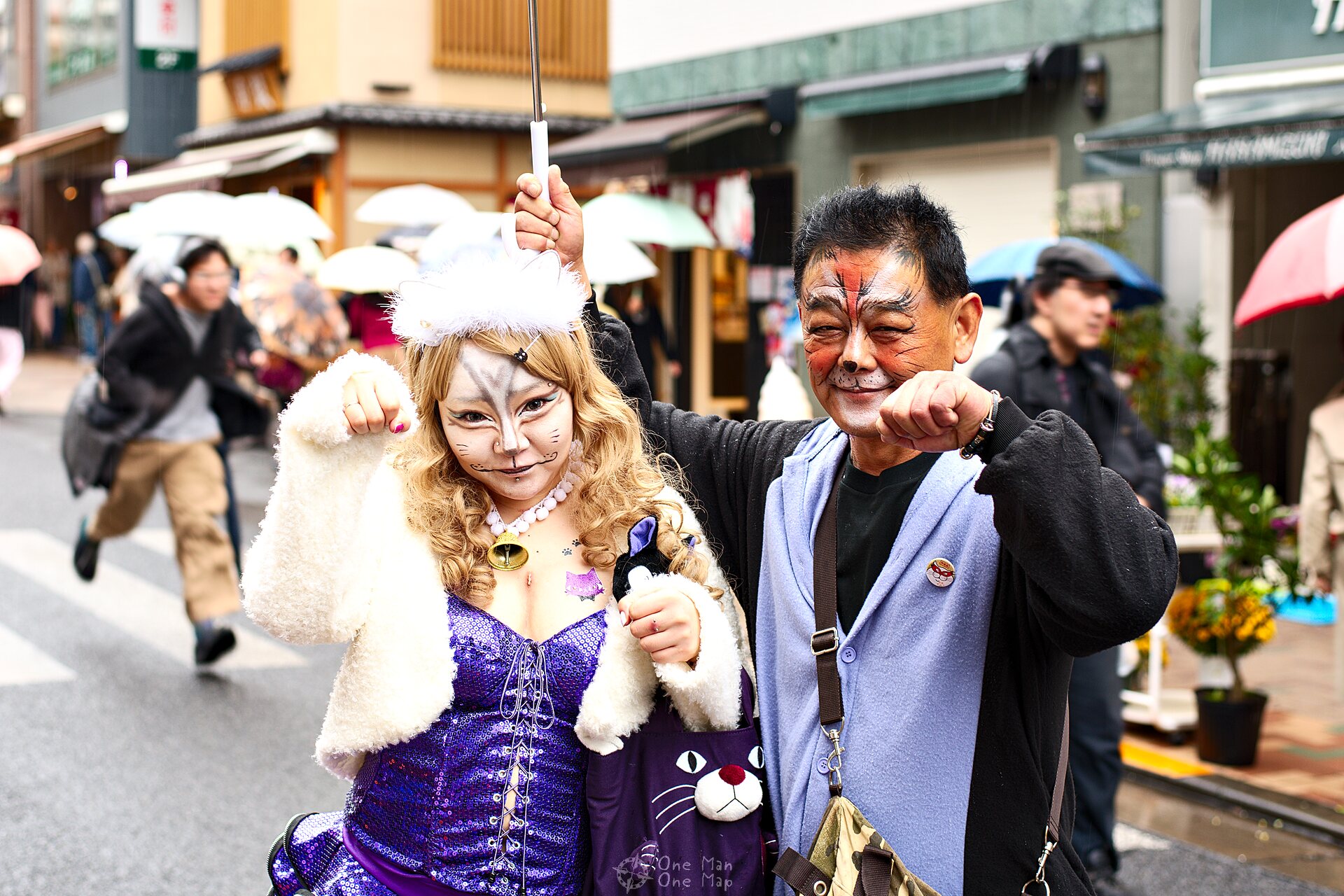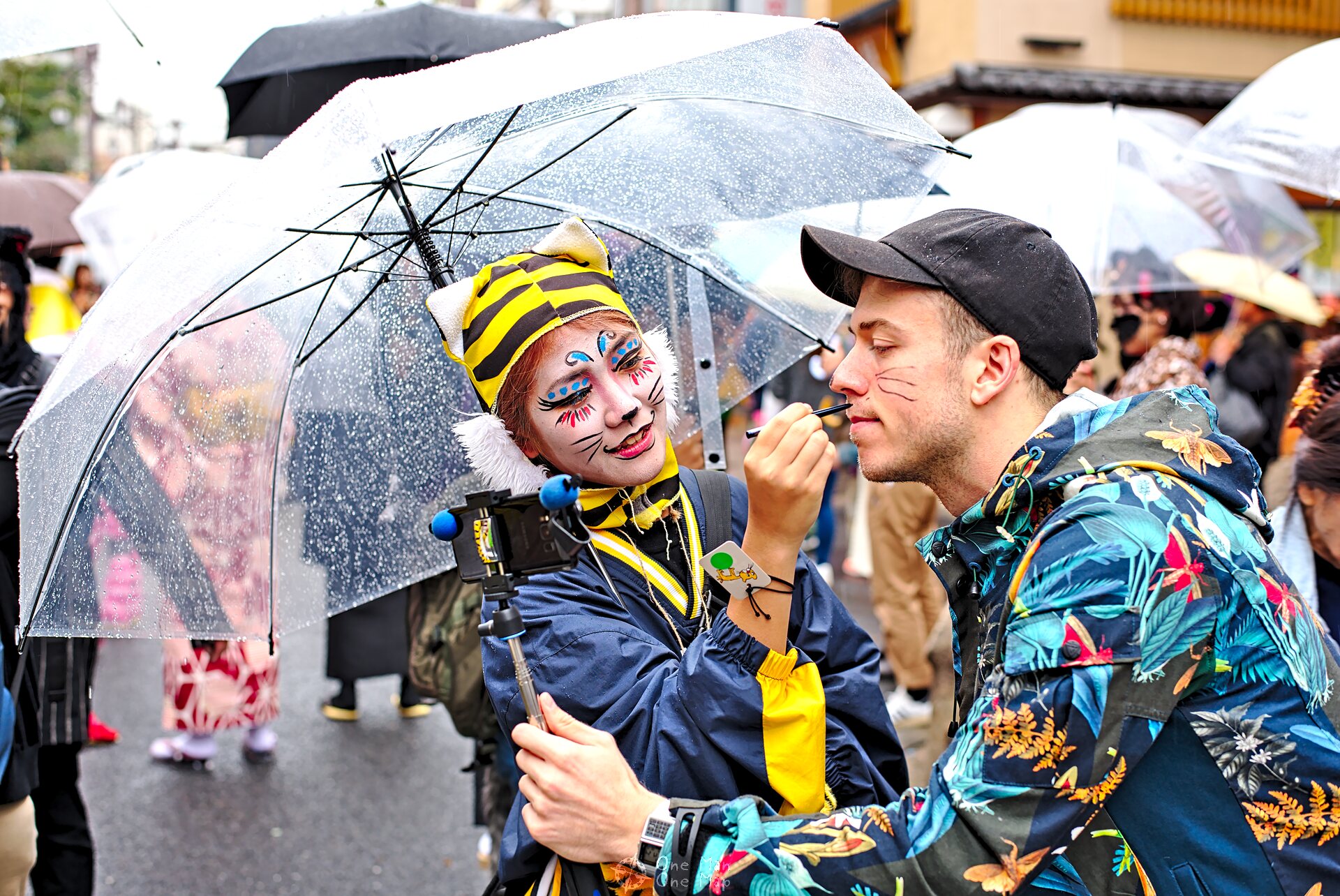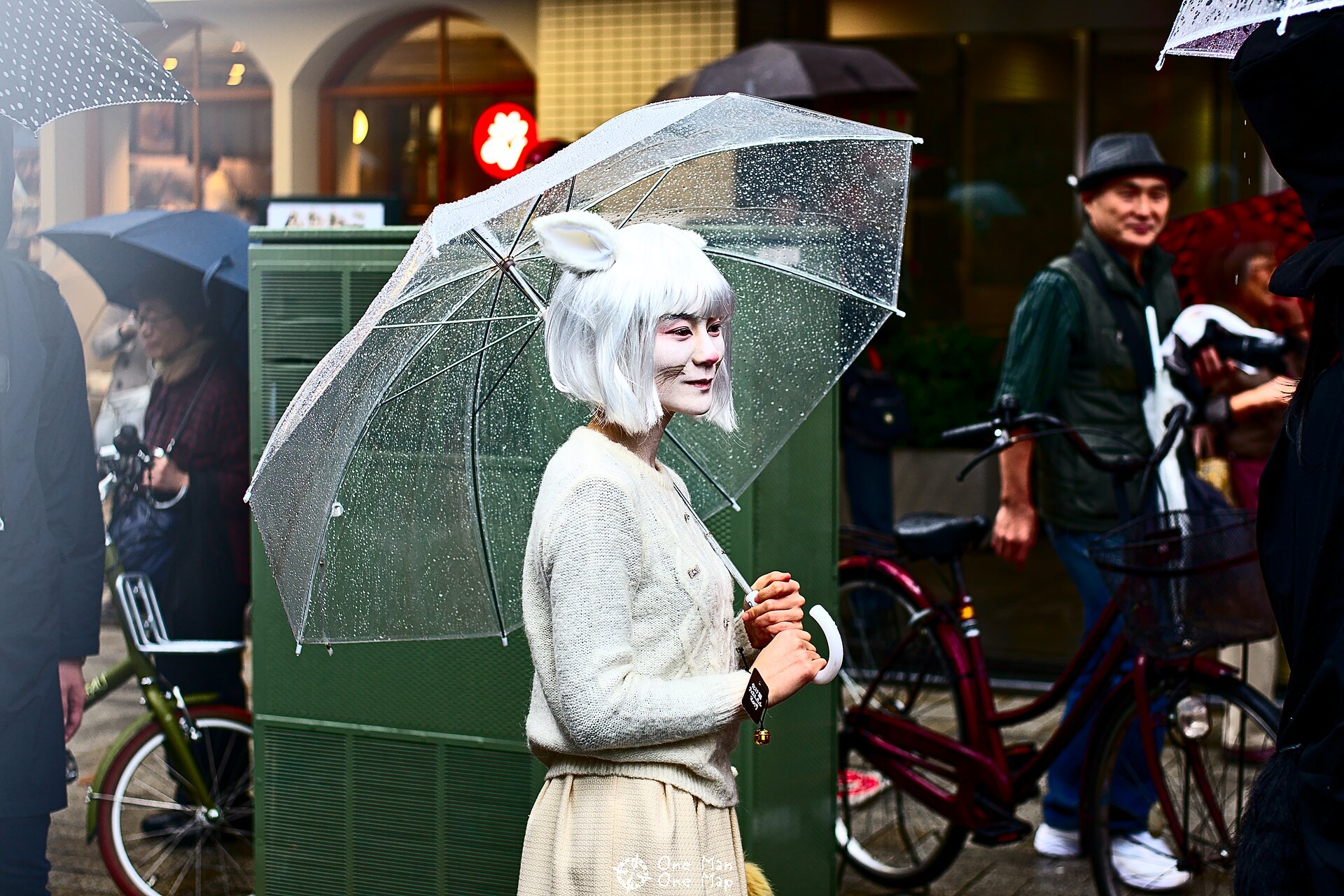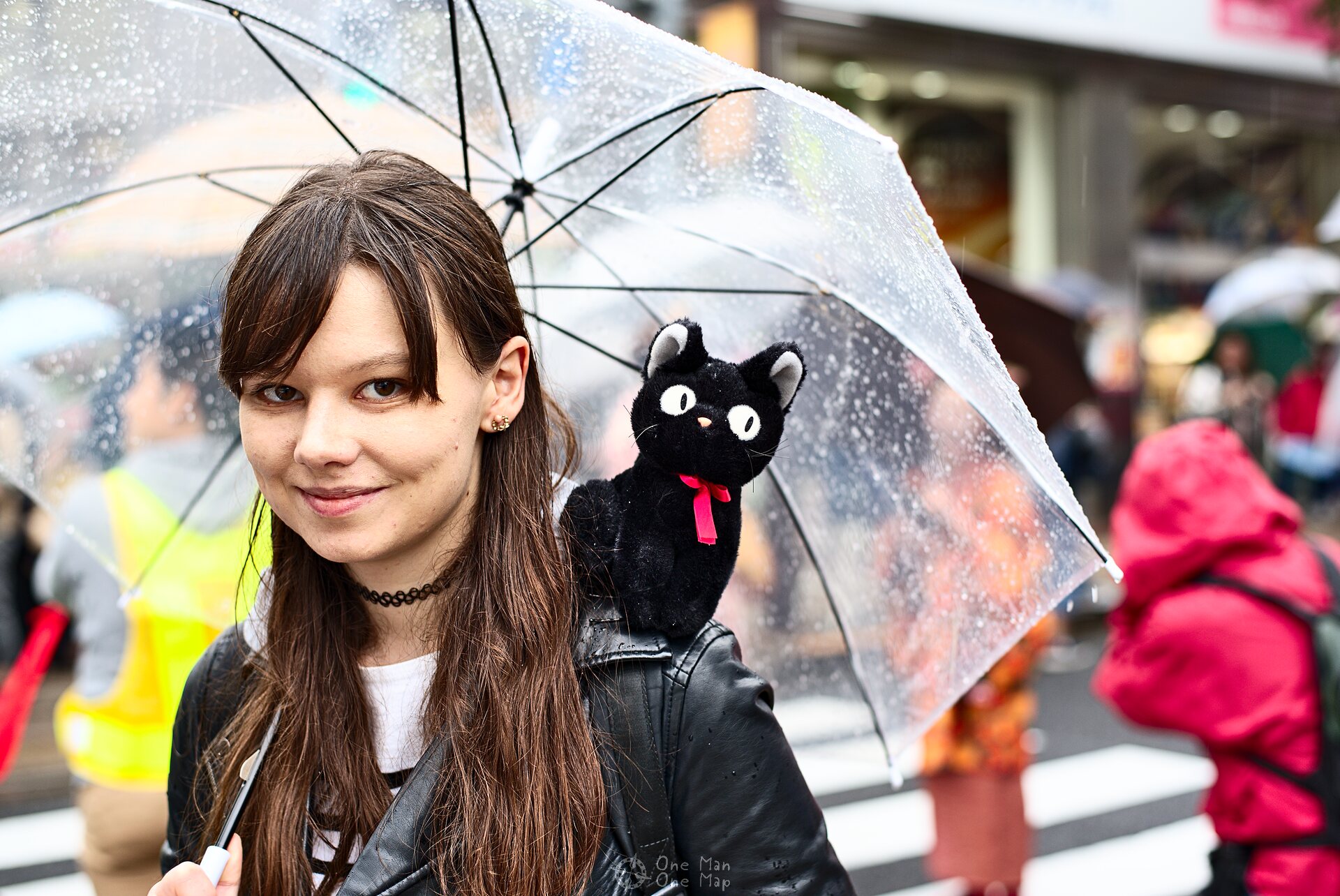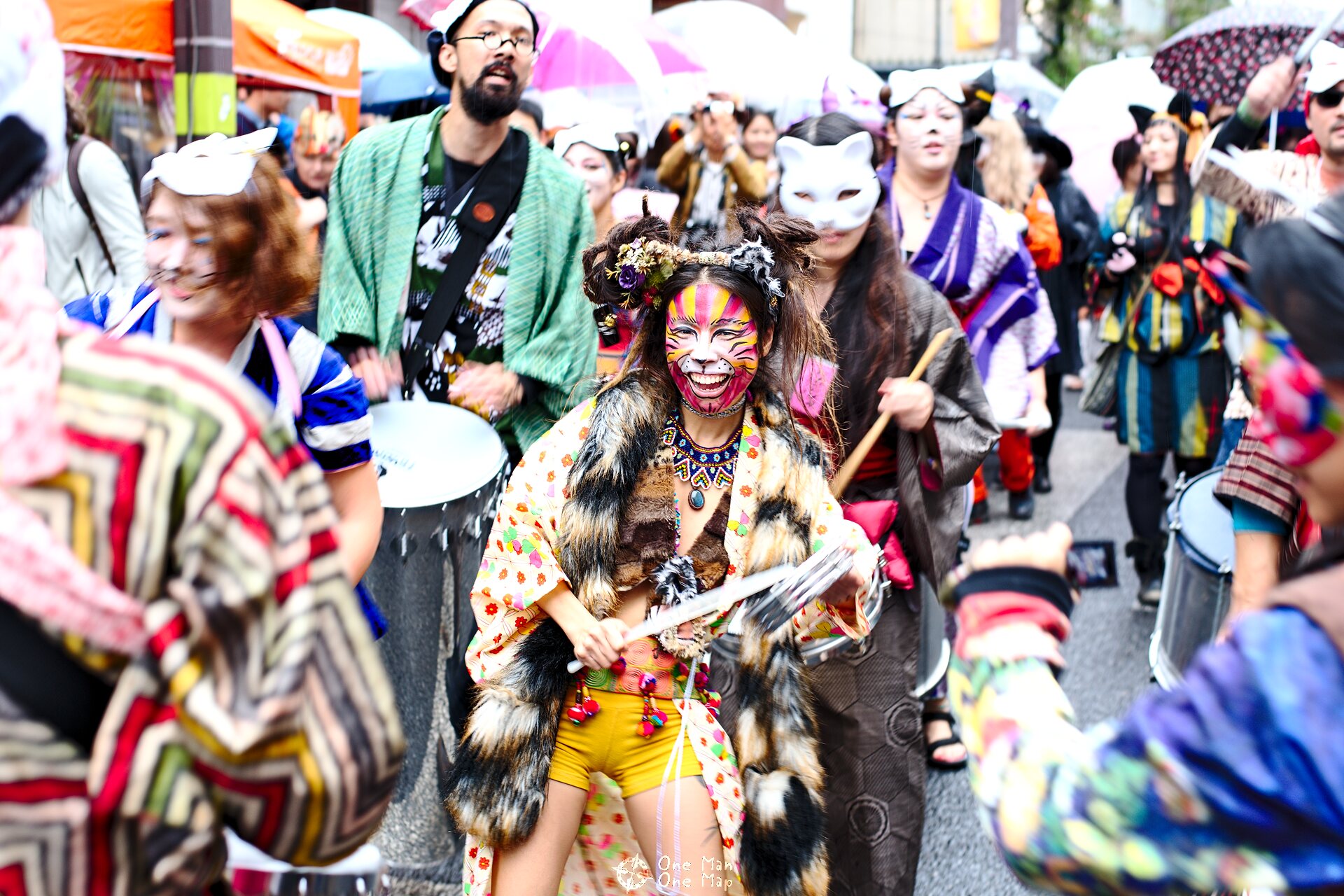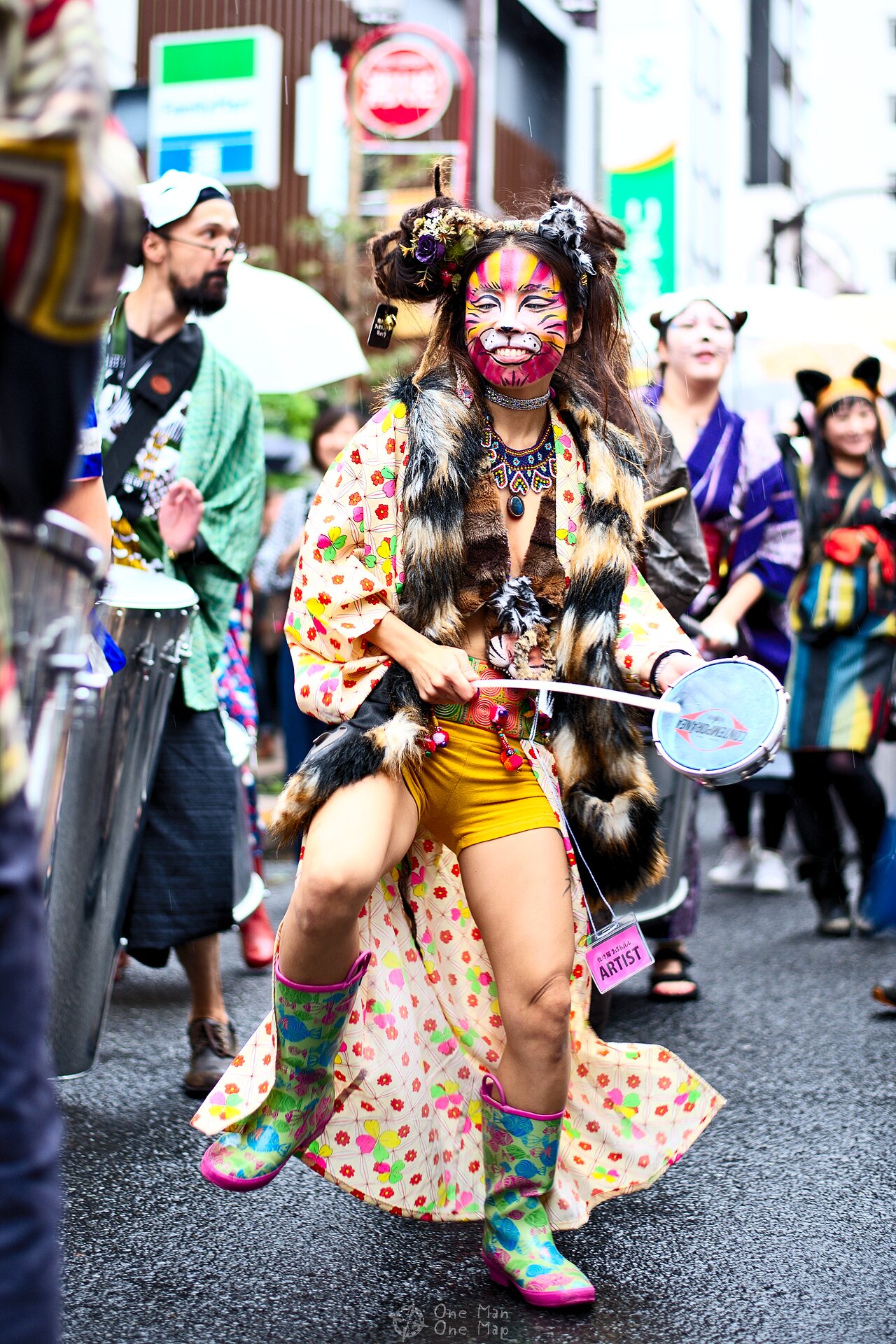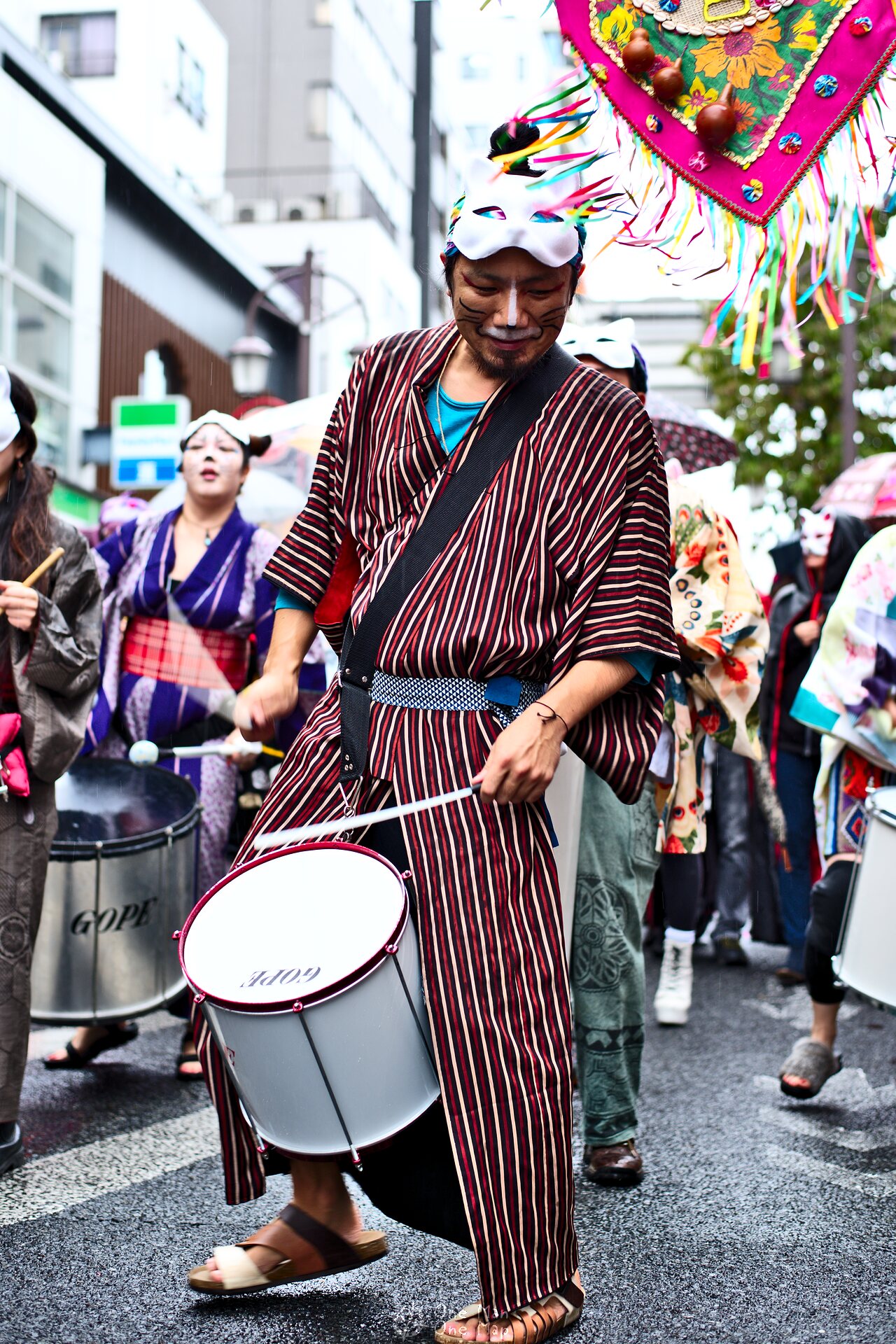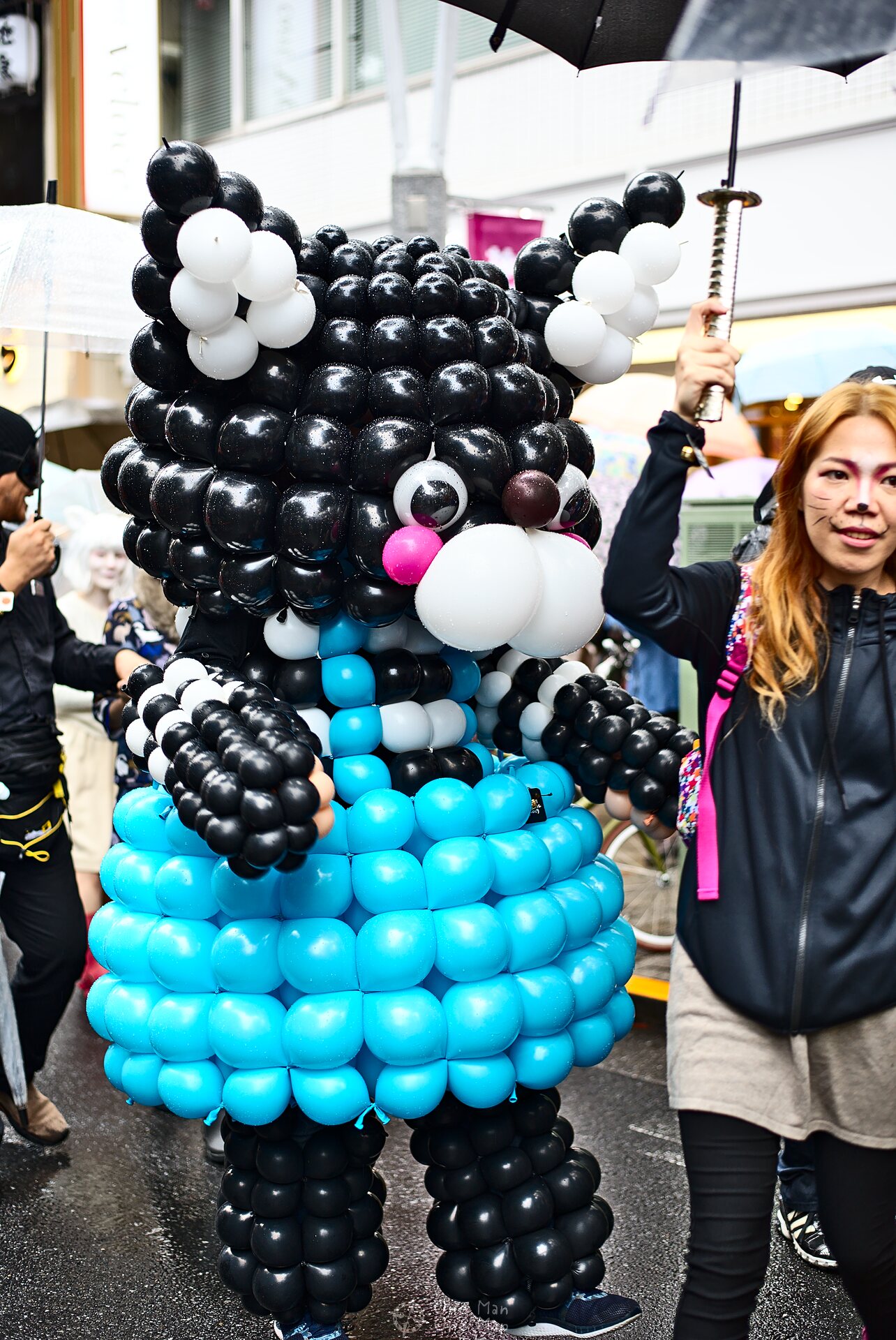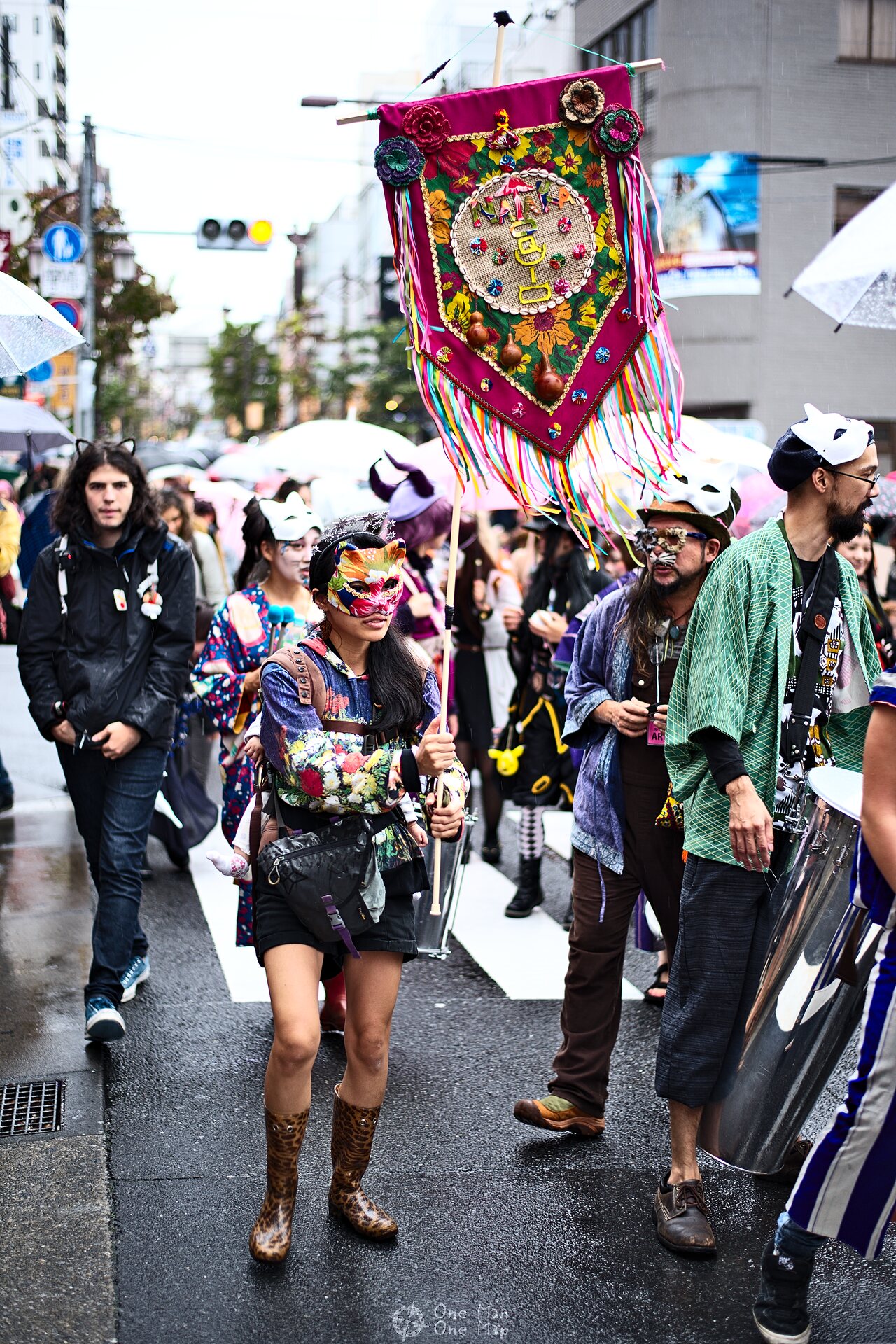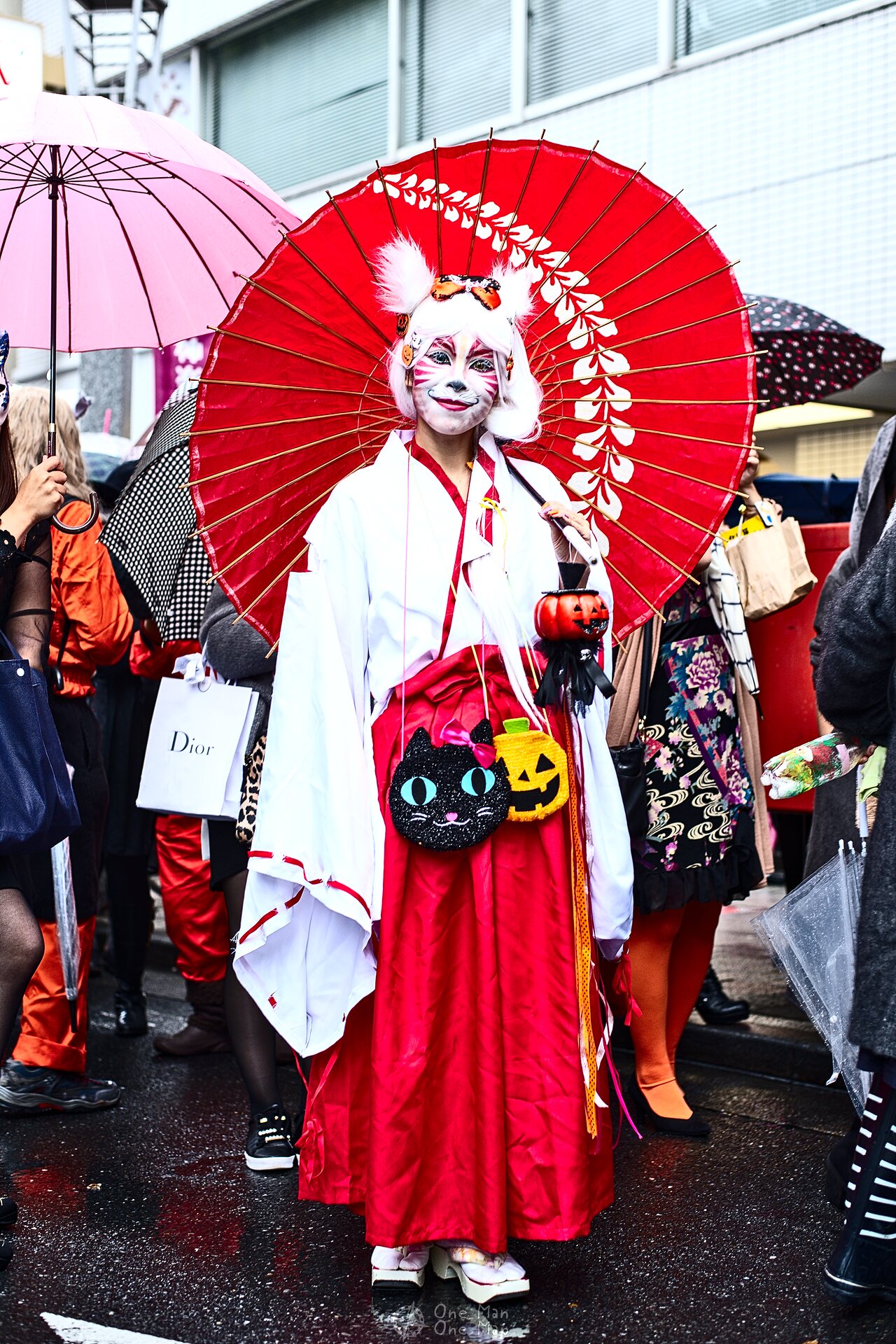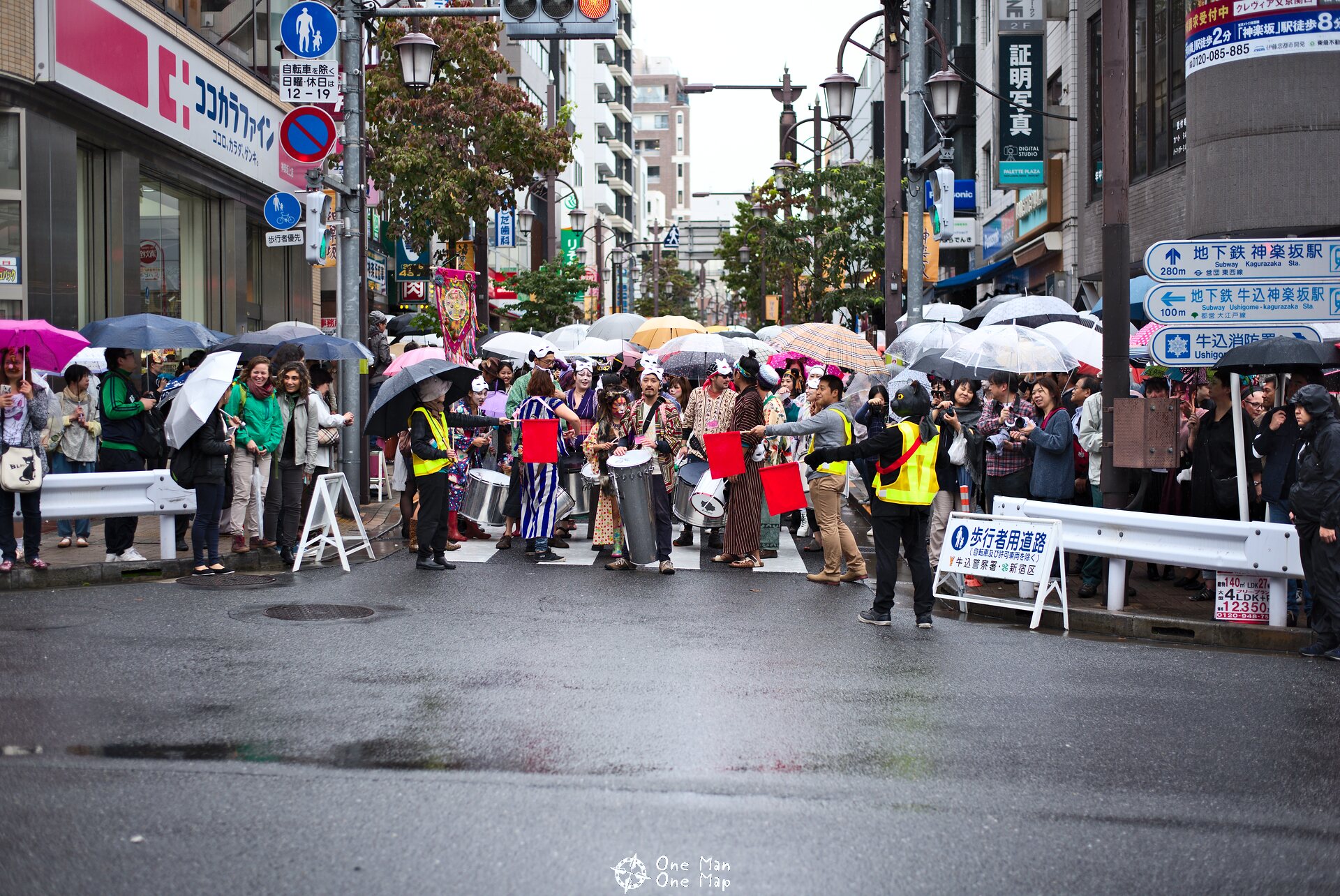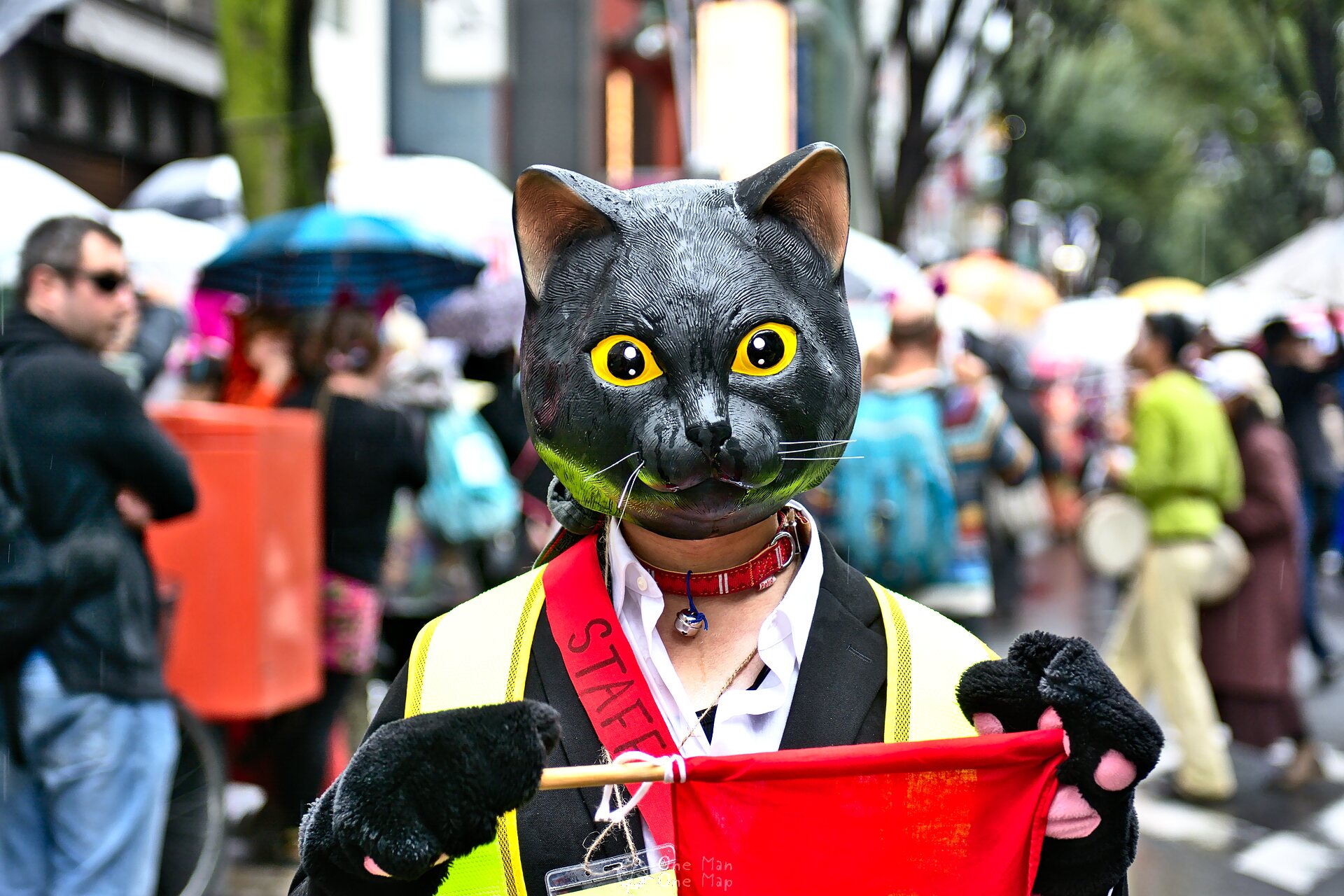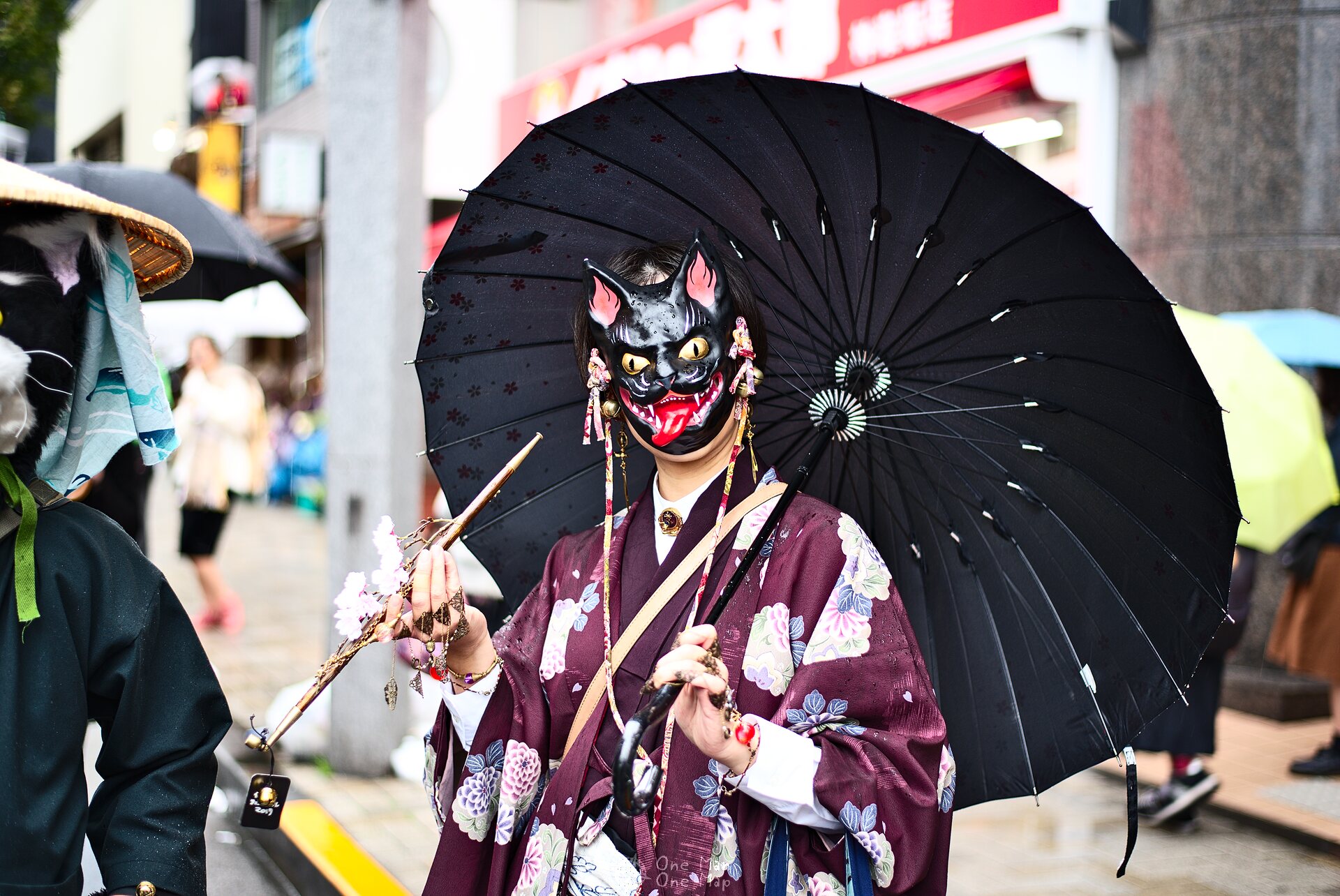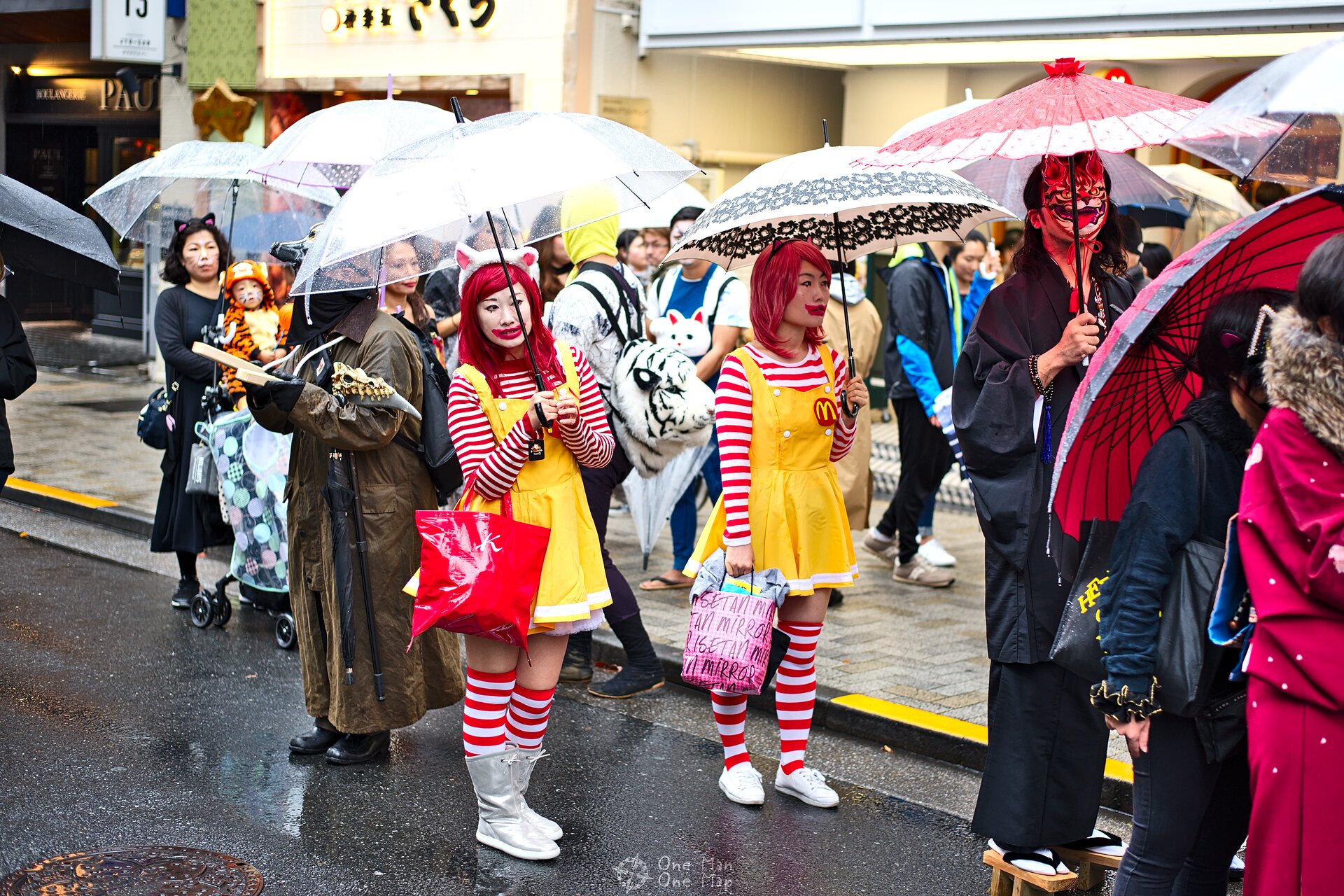Dieser Artikel ist auch auf Deutsch verfügbar. Click here to find out more about Japan!
My route within Japan can be found here.
Ever wanted to see people dressed up as monster cats parade the streets of Kagurazaka in Tokyo? I bet you did, and if you’re asking yourself why this is even a thing, there are two reasons.
The first one is that Japanese folklore actually knows several types of cats with supernatural abilities. Obake (お化け) or Bakemono (化け物) are supernatural, shapeshifting creatures, a Neko (猫) is a cat, so a Bakeneko (化け猫) is a shapeshifting cat. There are many legends about them, a more common one is that old house cats (often thirteen years of age seems to be the magic limit) gain the ability to shapeshift into humans, wear towels on their heads, dance around, talk to people in human words, curse humans, possess humans (!), or go to the mountains to lead a pack of wolves. Like, normal cat stuff, you know.
Another legend is that of the Nekomata (猫また), who also transform their shape and seem to be strongly connected to mountains. The original legend seems to have been that Nekomata were cat-like beasts who lived in the mountains and attacked and killed humans. Later the legend also included Nekomata who concealed themselves as house cats, or Nekomata were said to be old house cats who had gained supernatural powers. Some of them had ran away into the mountains and turned into the original wild creatures. Some Nekomata are also said to have two tails. So there is some overlap between Bakeneko and Nekomata, but Bakeneko seem to be content with being adorable and tormenting humans a little, while Nekomata have a thing for hunting, abducting and eating them. I guess here’s your reason for not calling it the Nekomata Festival 😉
The second reason is that the author of the the 1905/1906 novel I Am A Cat (吾輩は猫である), Natsume Sōseki, was a famous figure of Kagurazaka. In this novel he describes the lives of a teacher and his family living during the Meiji period through the eyes of a cat, focusing on the ongoing clash between Japanese traditions and Western culture during that time.
The festival
It is usually held on a Sunday in Mid-October. In 2017 it was on October 15, in 2018 it will be held on October 14. The official website is in Japanese, but it translates well using Google Translate and the most important information (the map and the date) don’t really need a translation.
The main event is the parade, but the actual festival lasts a whole day. You can turn yourself or your kids into cats if you show up early enough to get one of the limited Cat Make-Up Tickets, try to win the Dance Competition, eat cat-themed food, buy cat-themed things, walk in the parade (500 Yen/3.80 Euro entry fee for adults and teenagers), and much more.
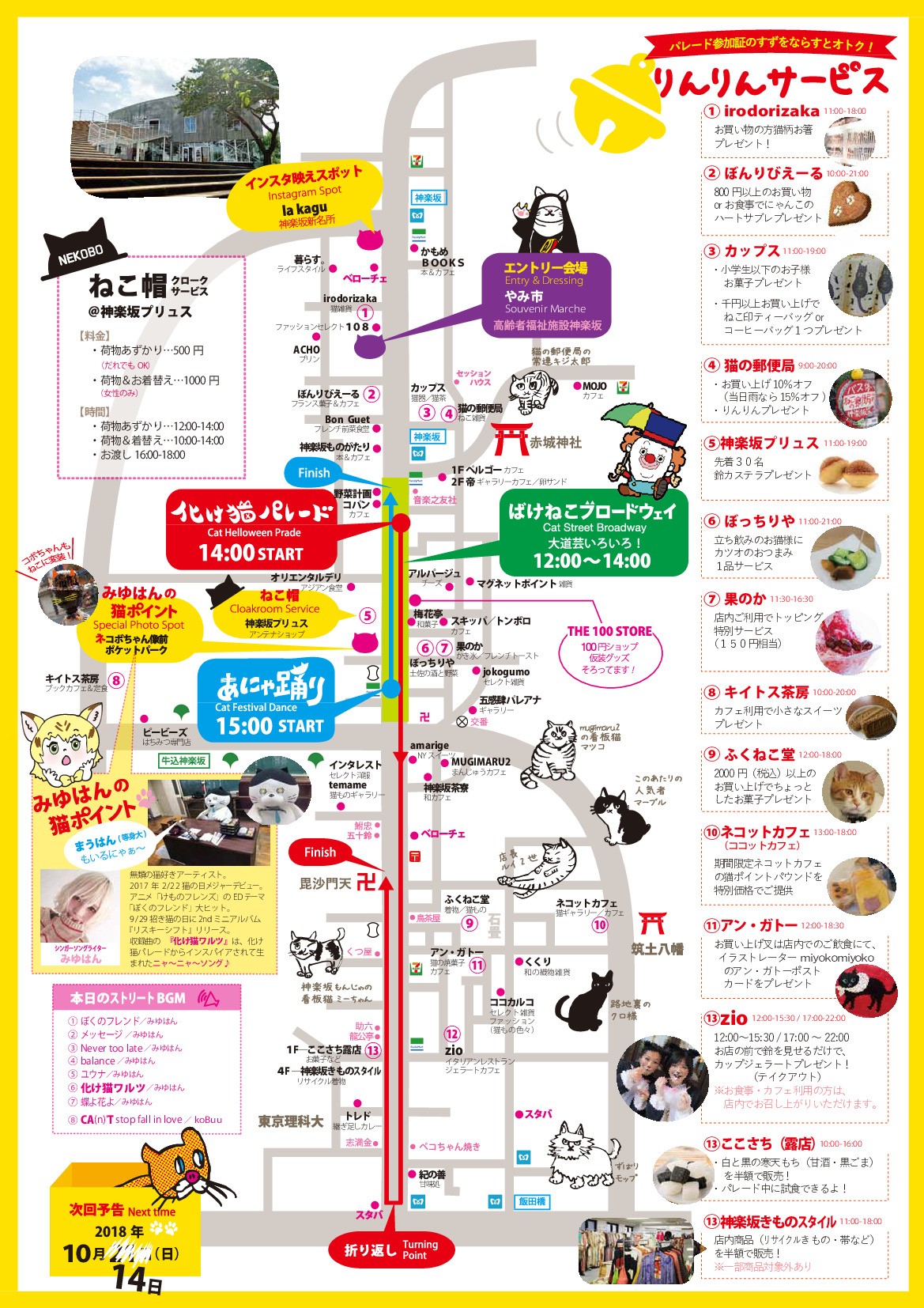
As you can see you don’t necessarily have to be a monster cat – a three-headed panda in chains is also fine.
On Bakeneko Day nothing is safe from being shapeshifted into a cat. Not even Kobo-Chan (コボちゃん), the beloved protagonist of several thousand comic strips.
The parade
The map calls it the “Cat Halloween Parade”, which seems to be a bit of a mistranslation because Halloween is usually two weeks later, but maybe it’s also just a try at giving tourists a clue as to what is happening. As an European I’ve had my share of costume parades, but they are not really a thing in many places of the world – “Halloween” usually is a well-known phenomenon though.
I saw exactly one mouse on this day. Luckily it seems to have turned into a shapeshifting creature too, so I guess it was safe, or at least knew how to defend itself…
It was great to see that truly everybody enjoyed this day. Young or old, Japanese or Foreigner, spectator or participant, bad weather, … nothing mattered.
The Bakeneko parade was surprisingly popular with foreigners, some of whom went to great lengths to turn up in style.
I don’t know what’s more remarkable: having the dedication to make all the balloons for this costume, or walking around in it for hours without popping a single one 😯
About half-way through the Kagurazaka neighborhood the parade passed the busy Obuko-dori Avenue (大久保通り). Now it was up to the Cat Police to keep people safe 😉
I could write even more about Tokyo, but now it’t finally time to leave this great city and continue to Nikko. If you haven’t had enough yet, make sure to also have a look at Tokyo by Day and Tokyo at Night! 🙂
This post was written by Simon for One Man, One Map. The original can be found here. All rights reserved.

